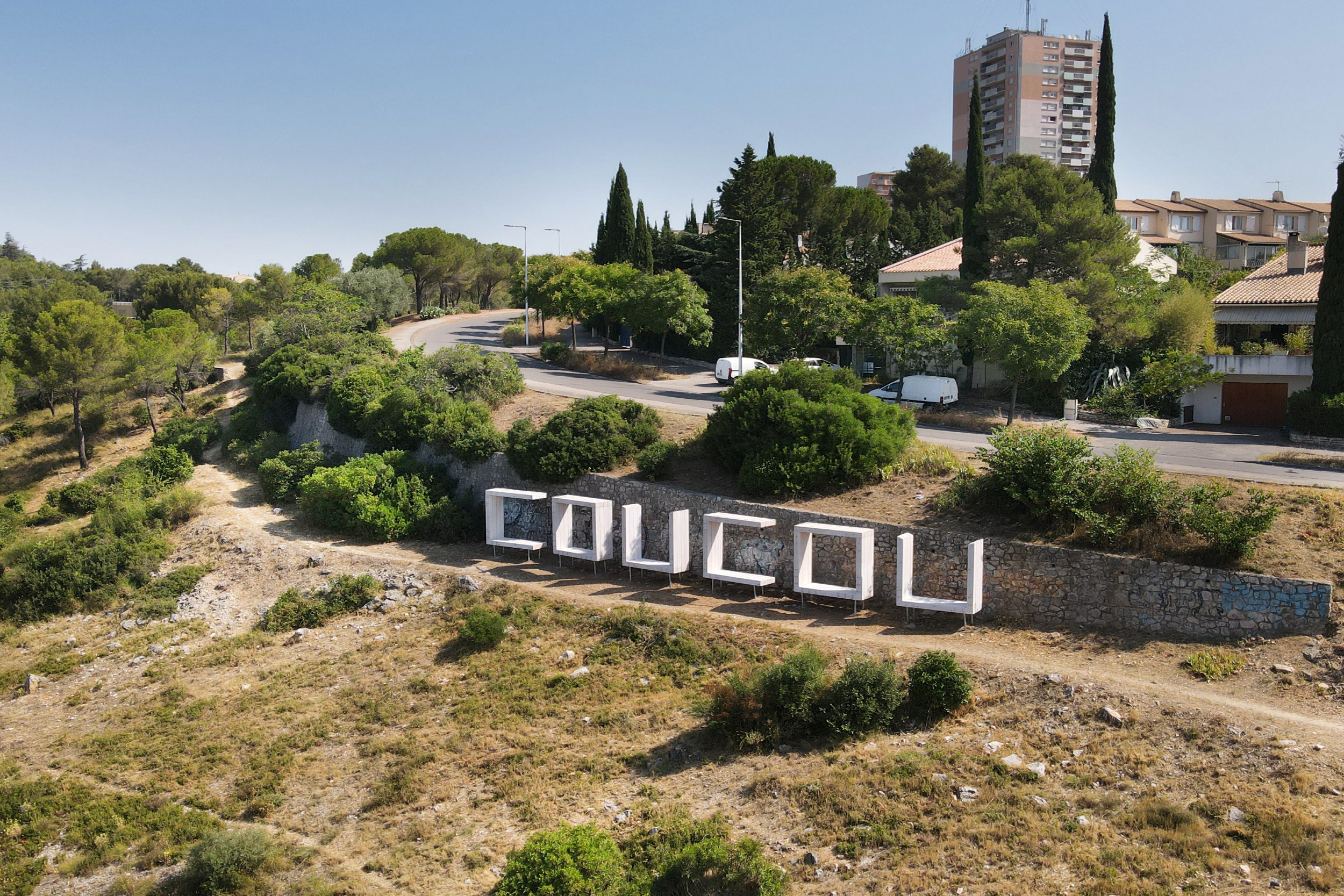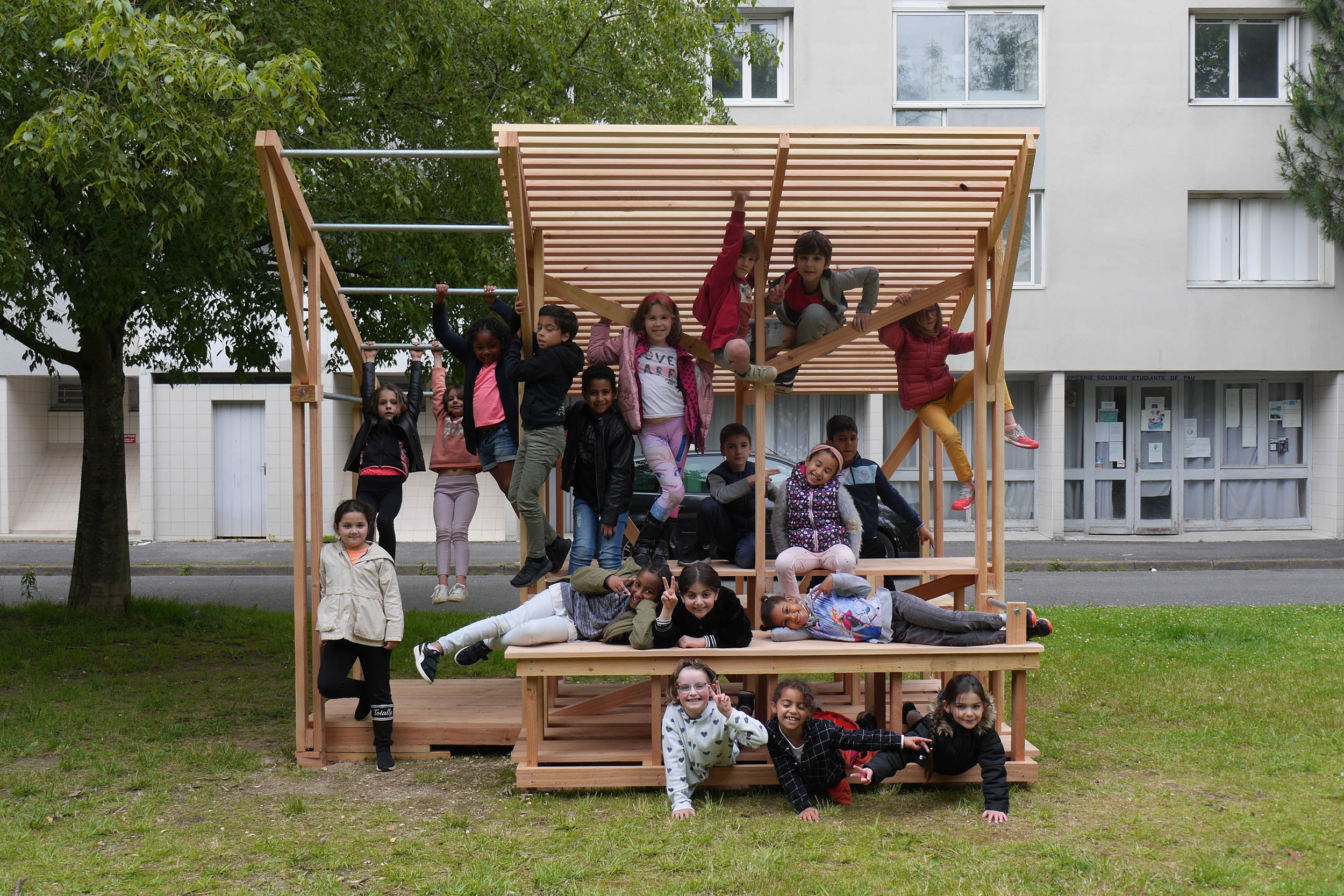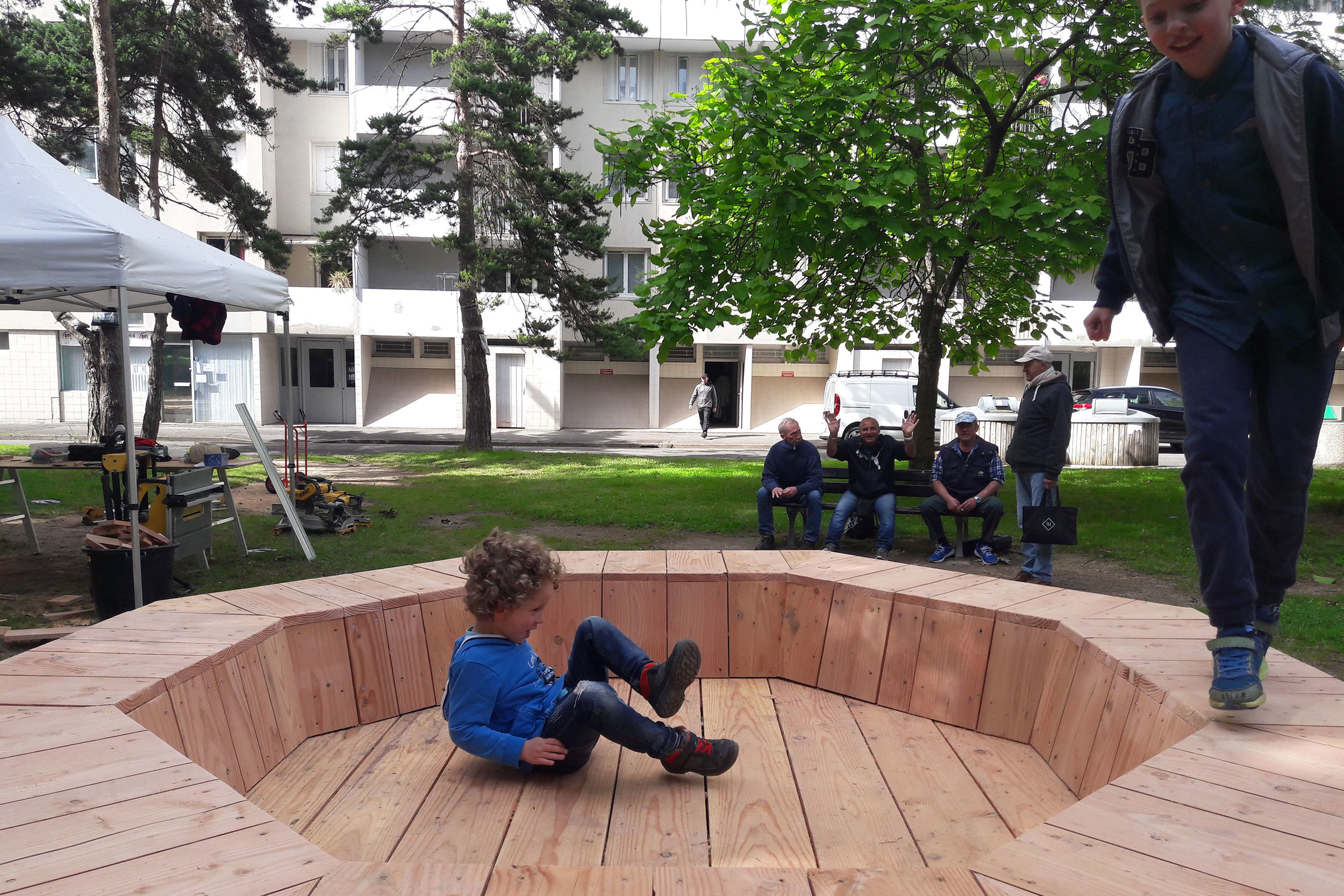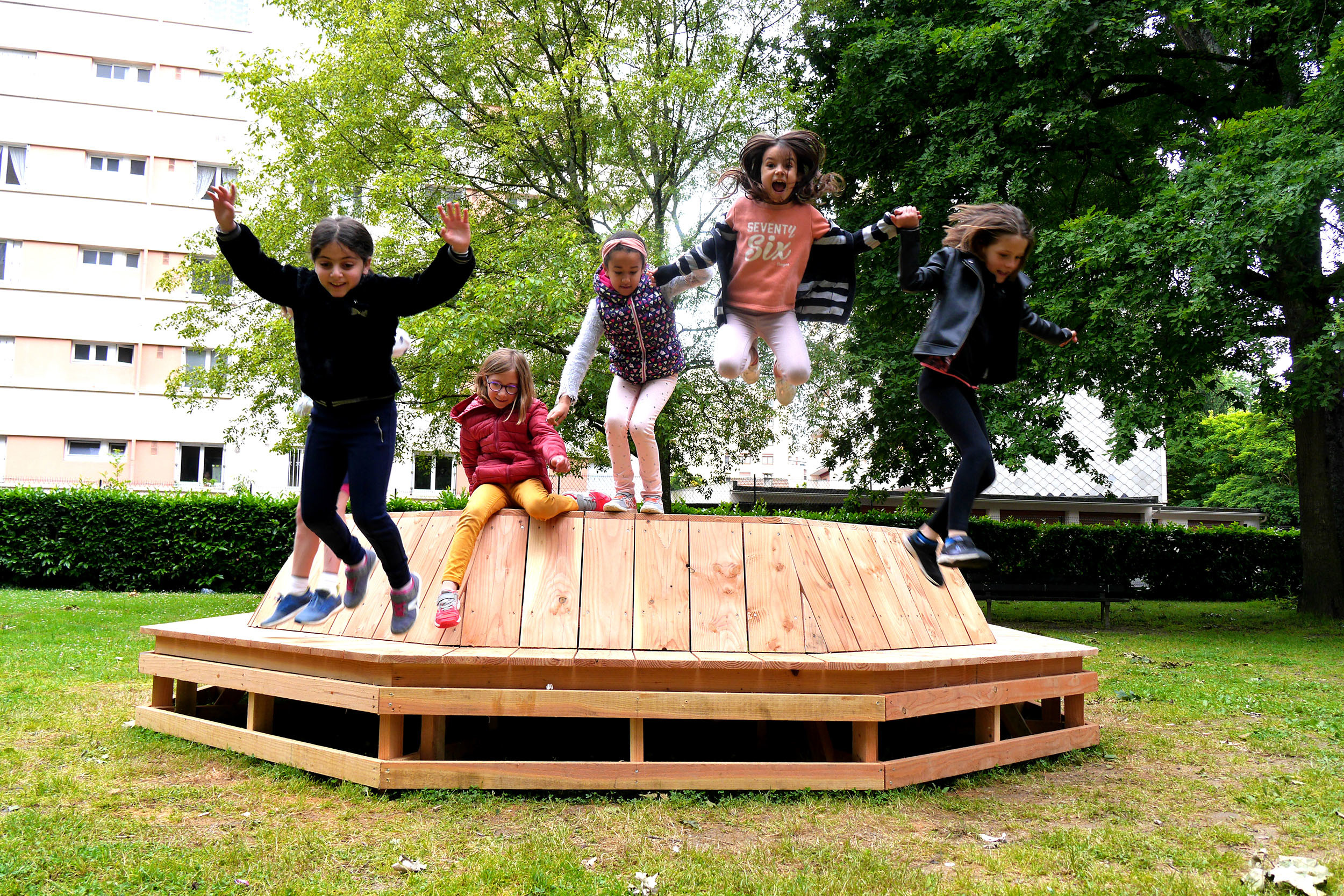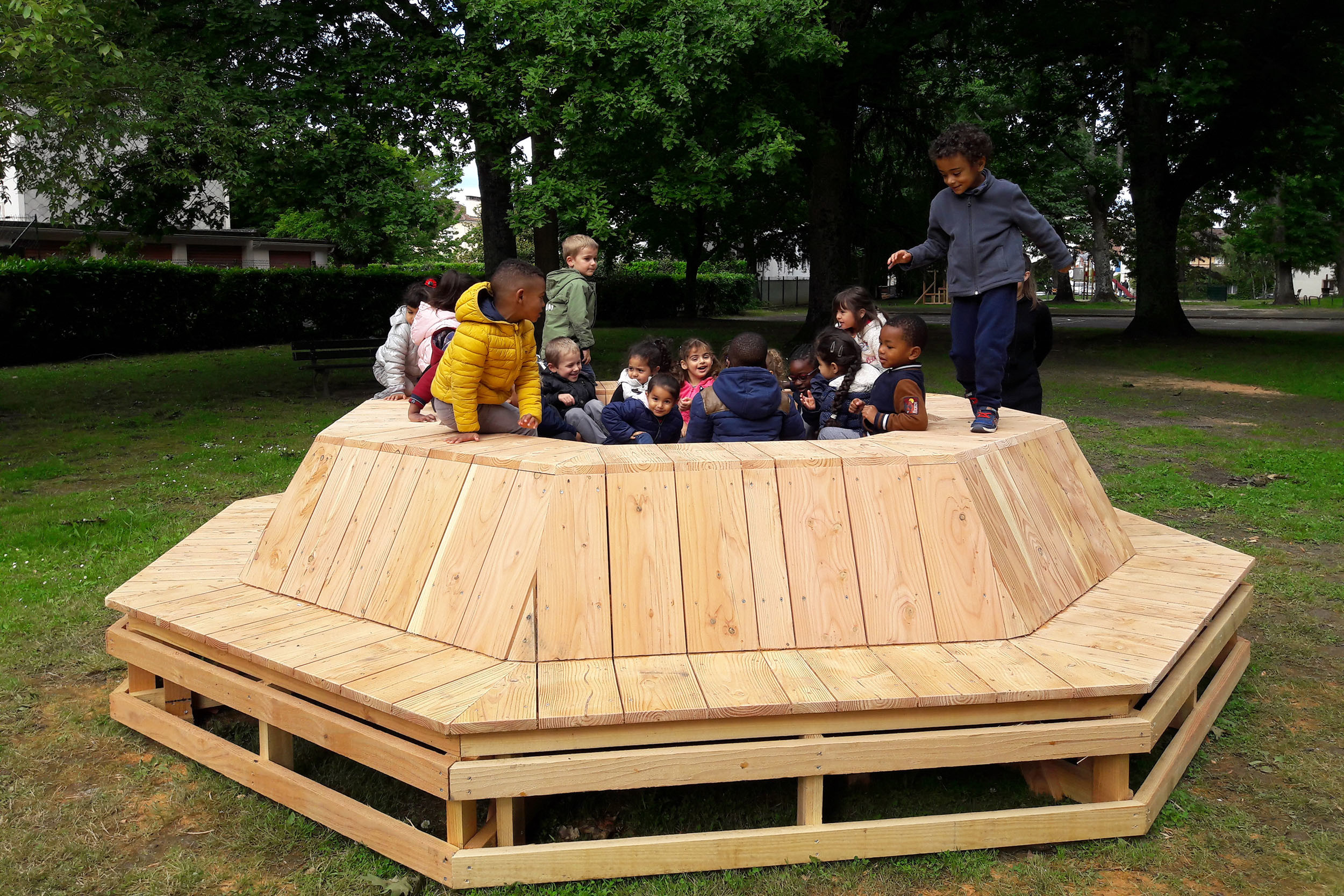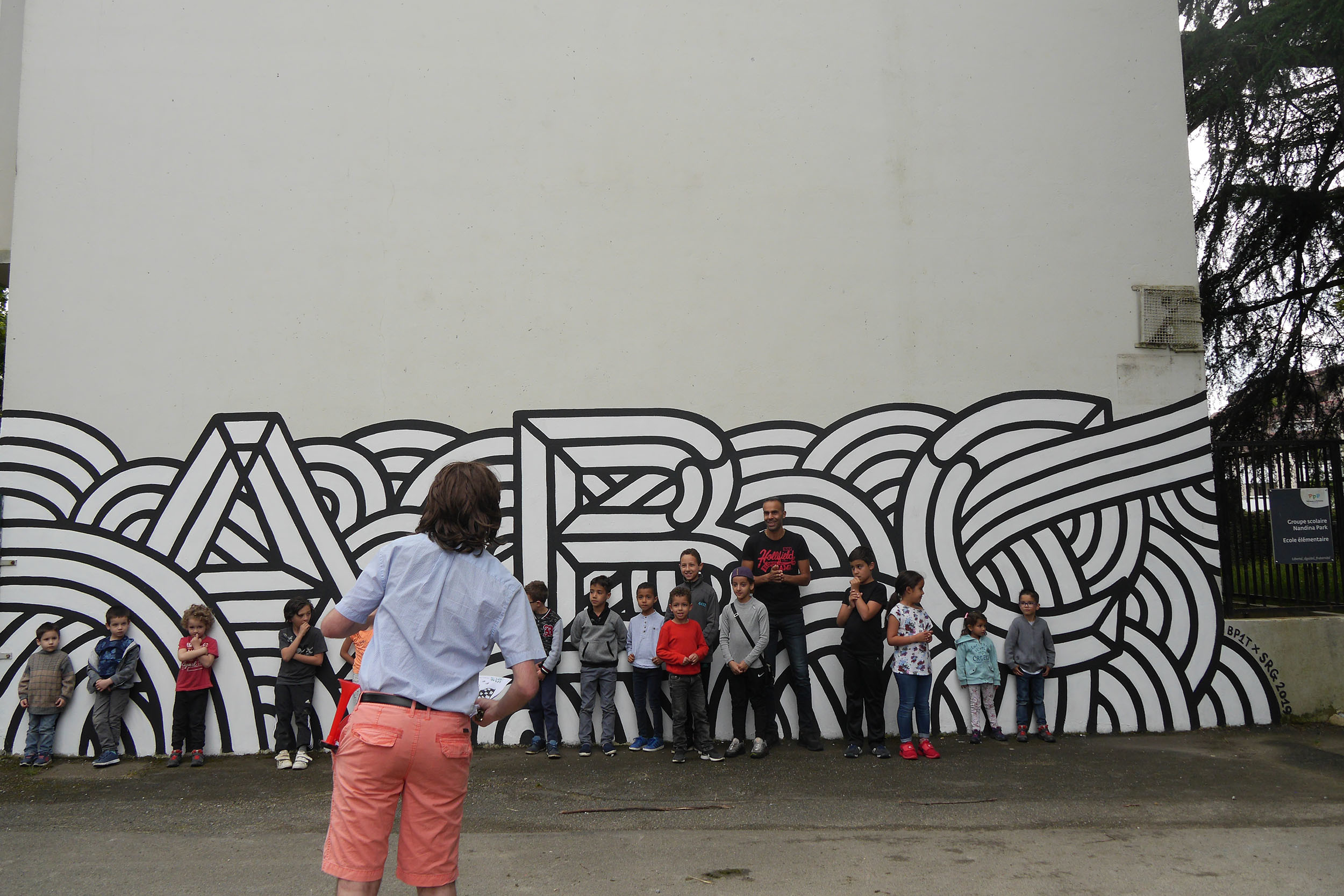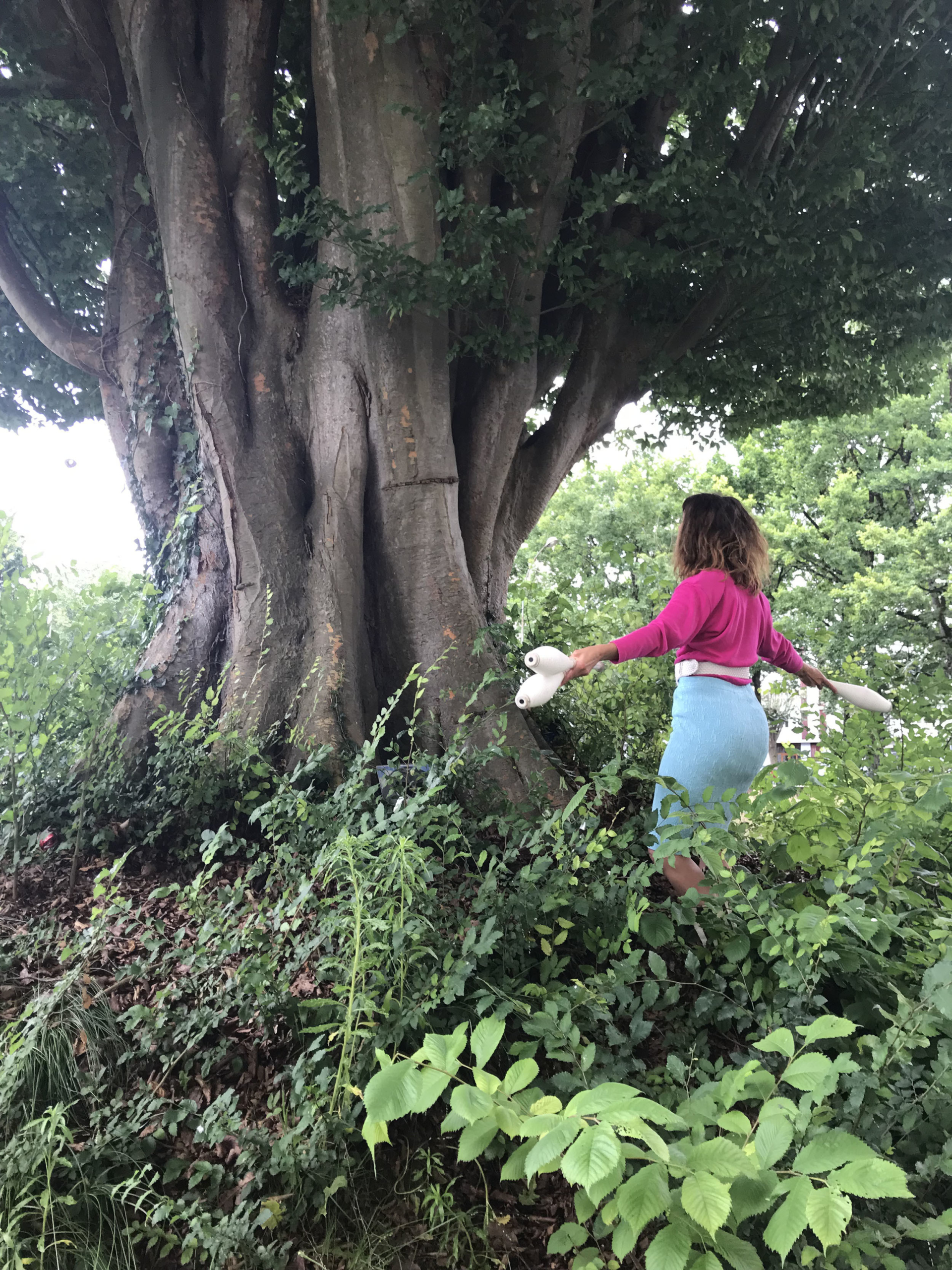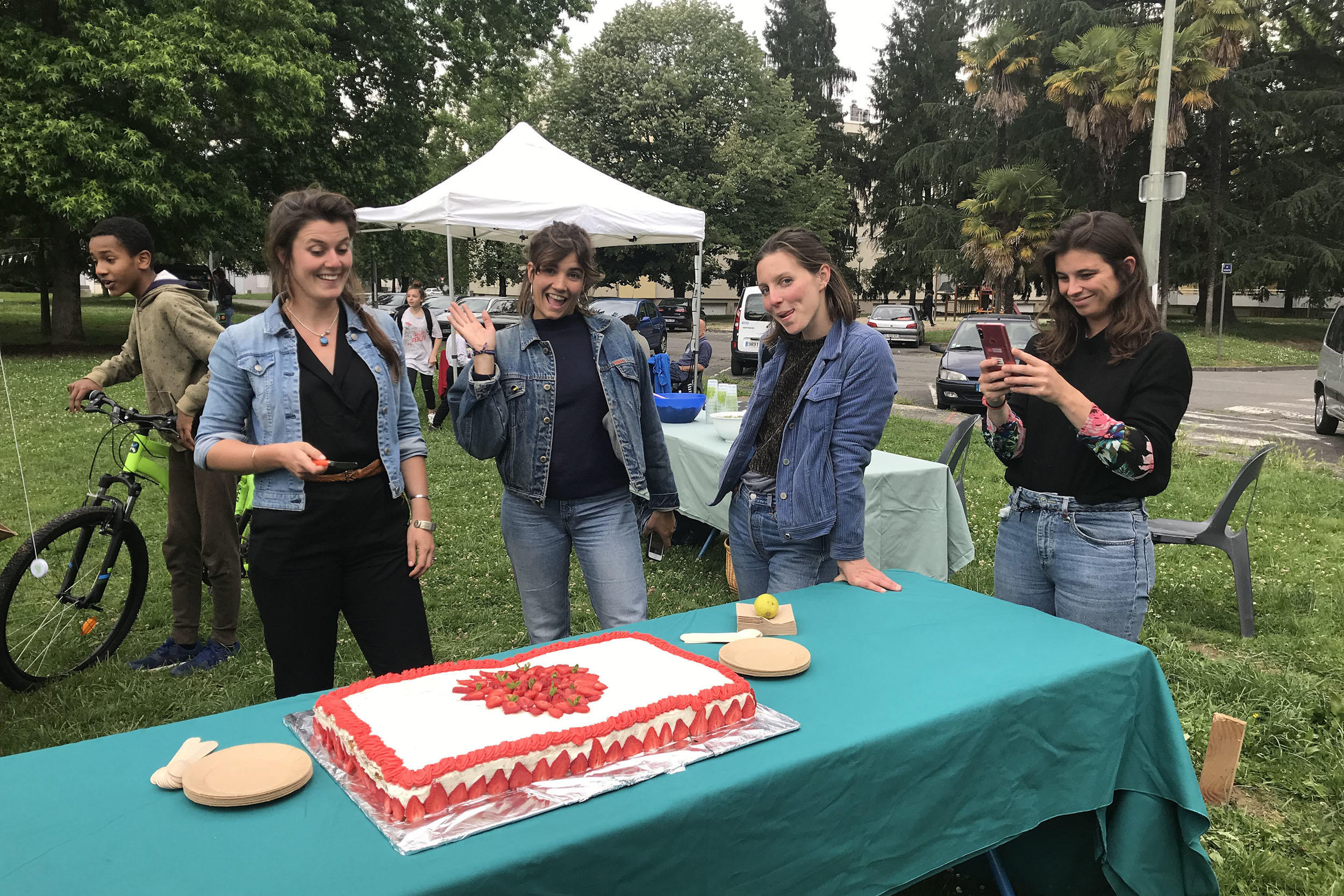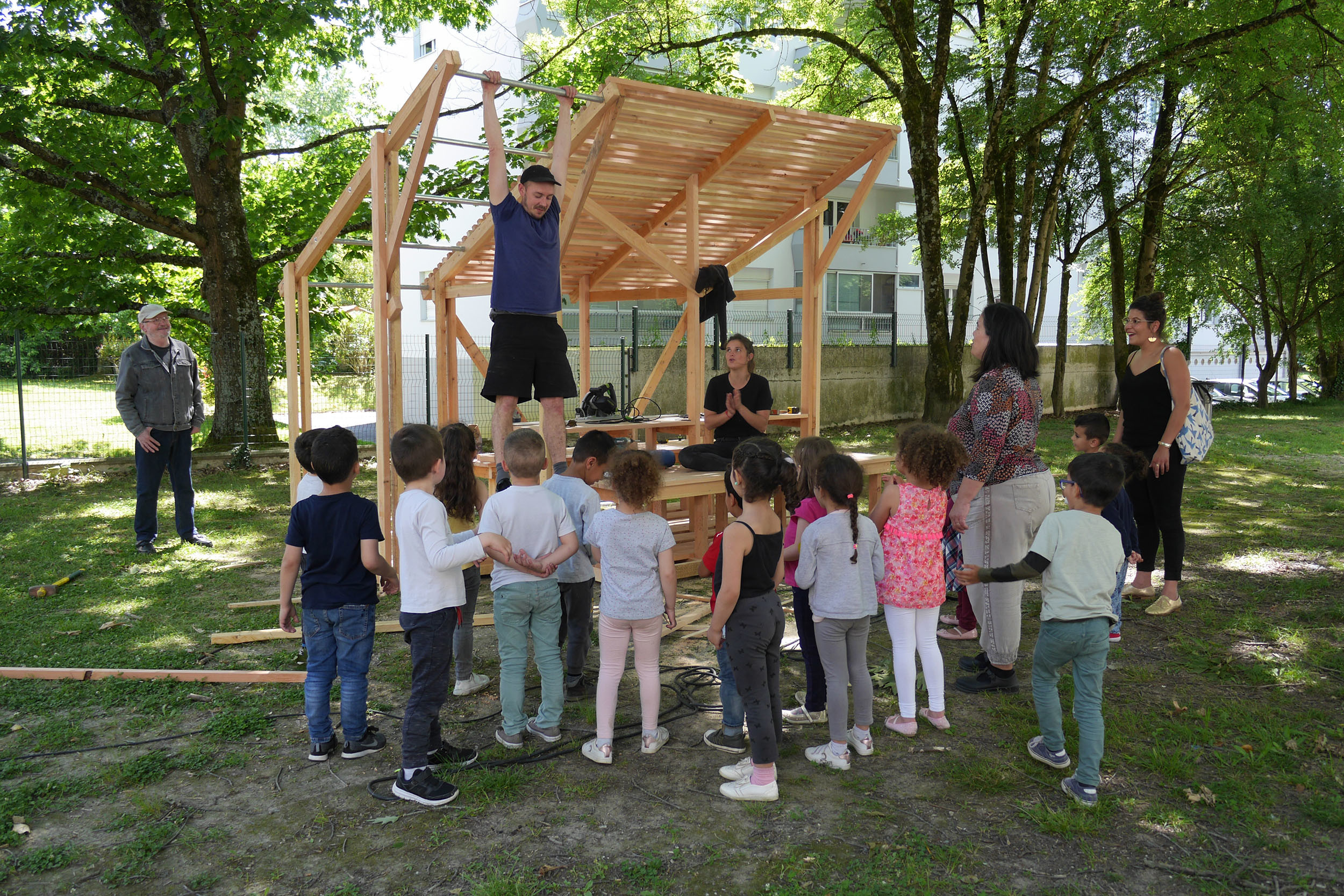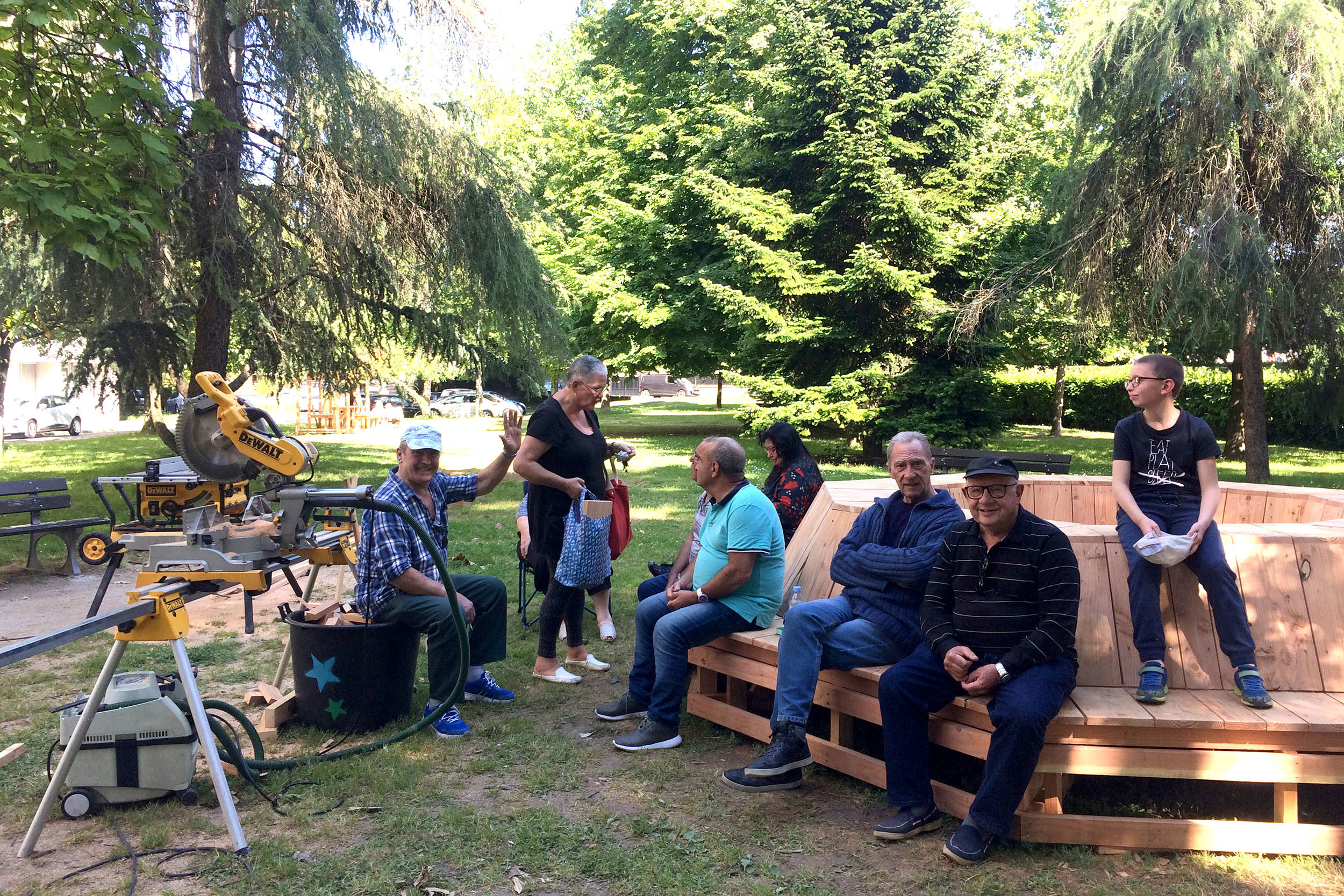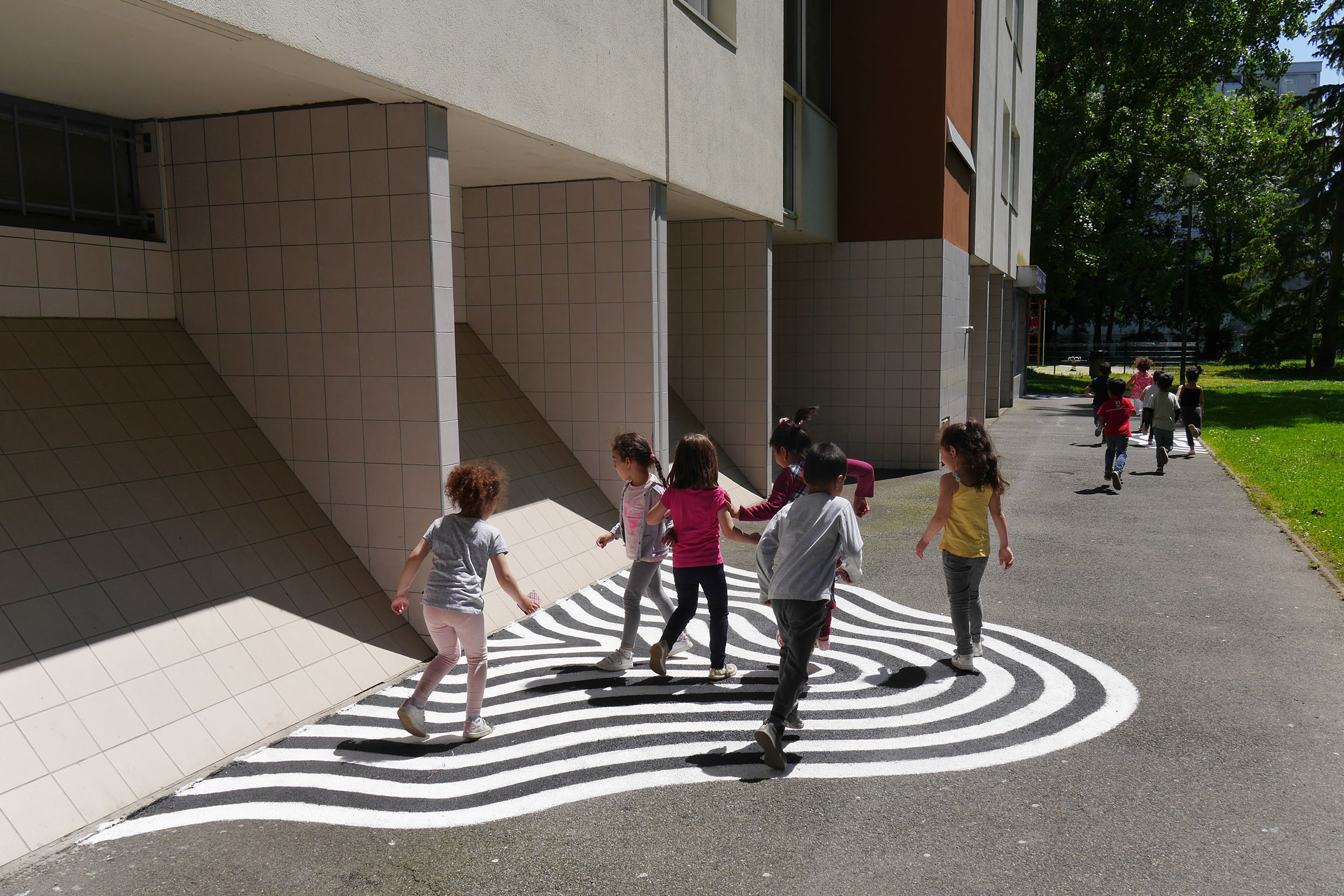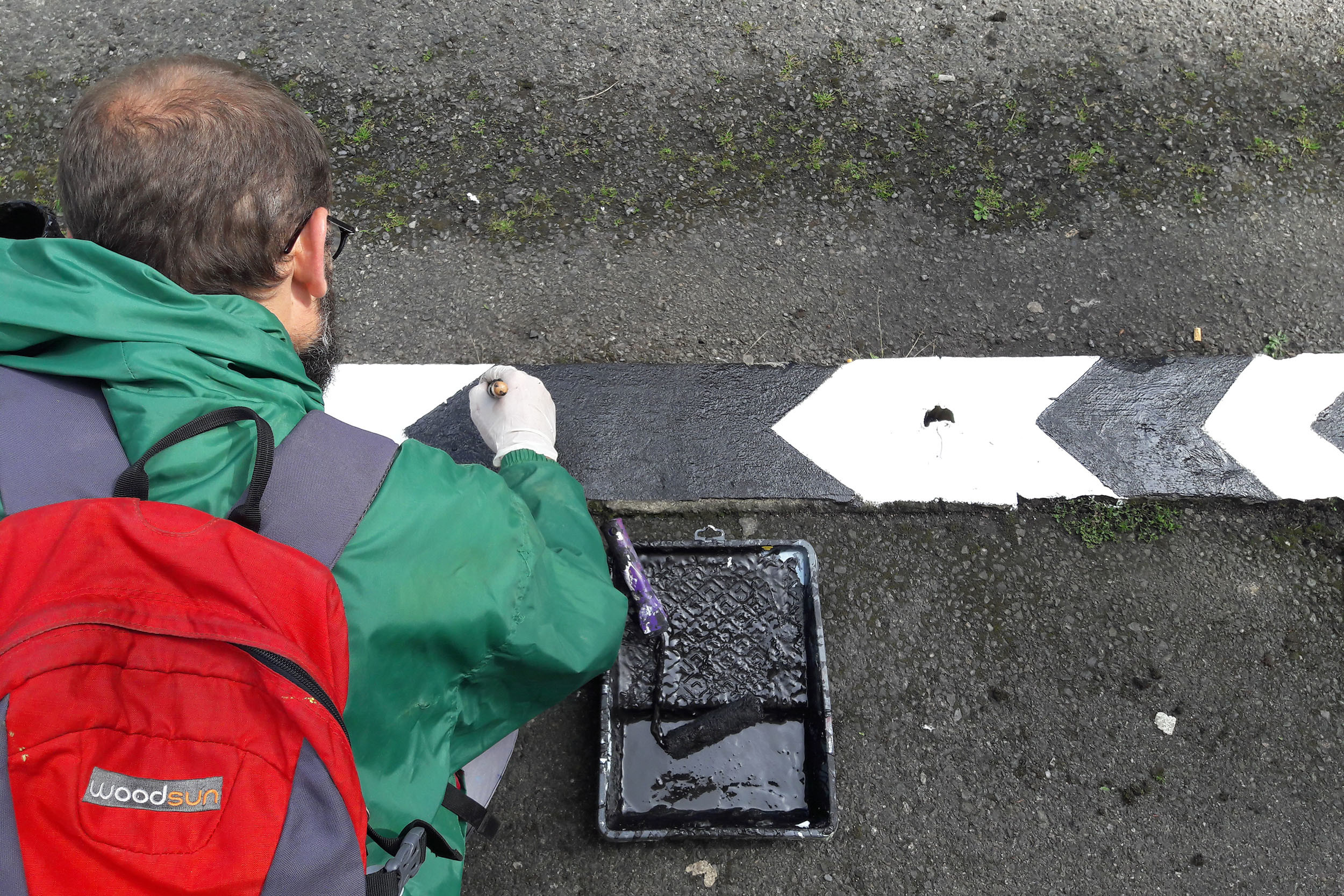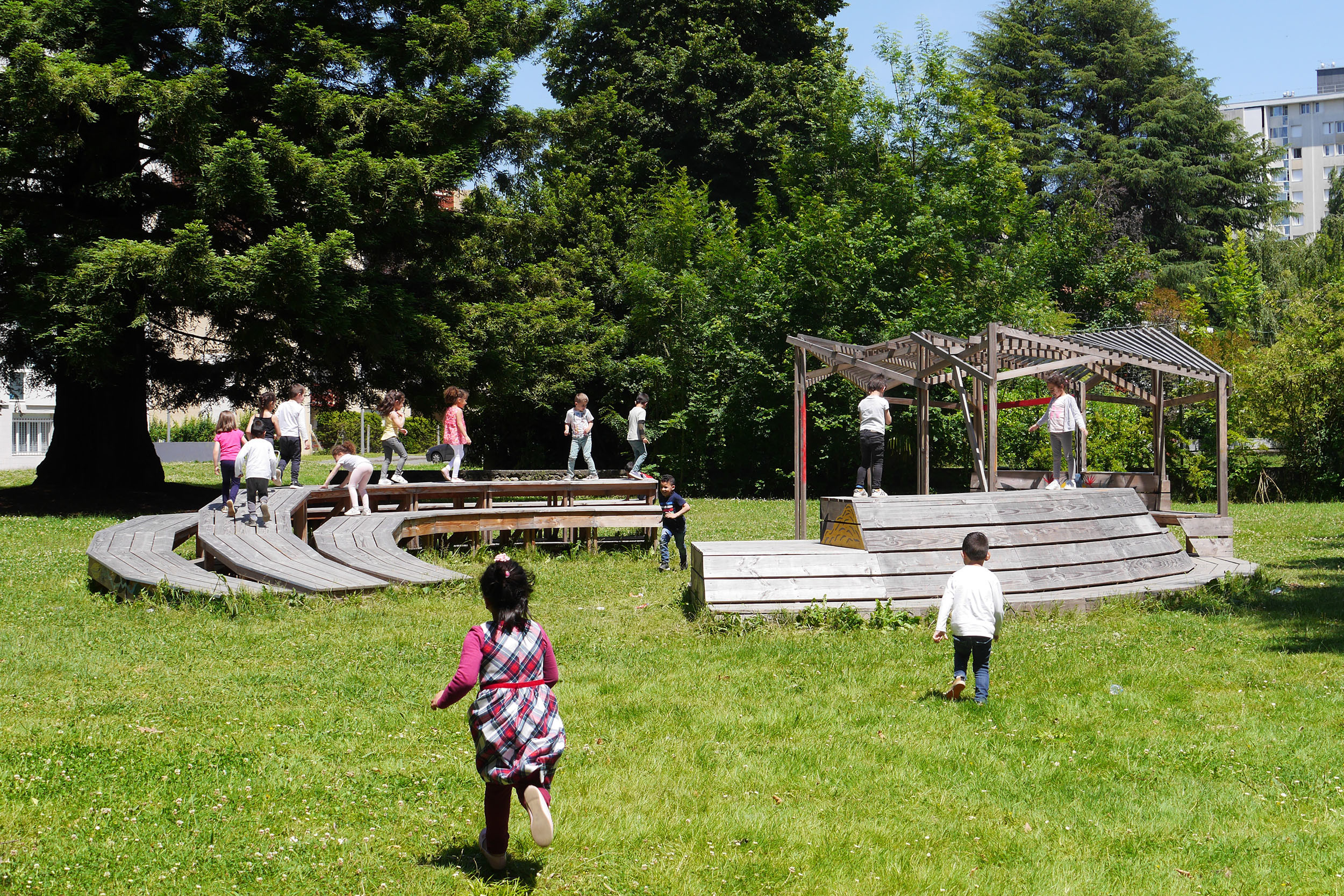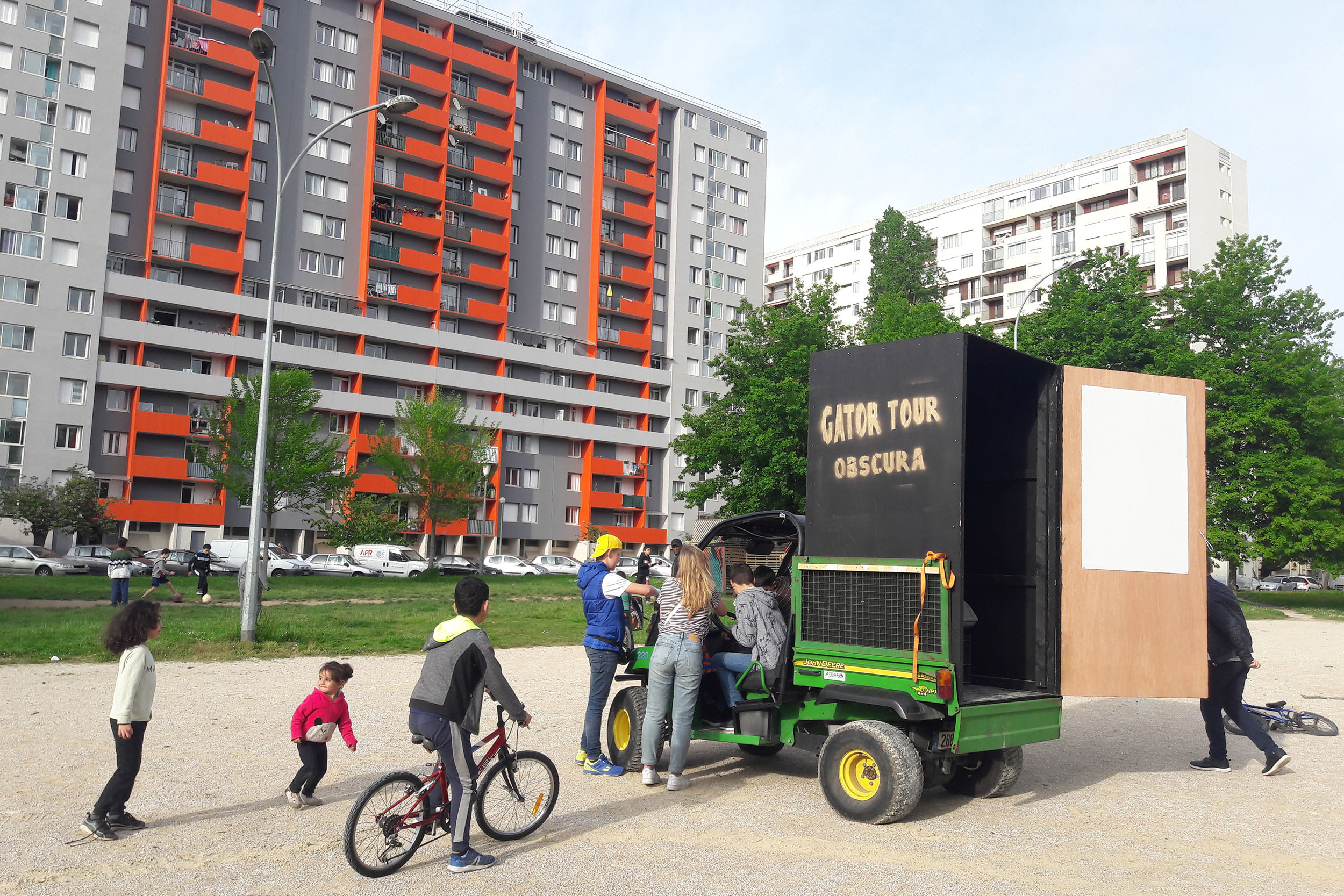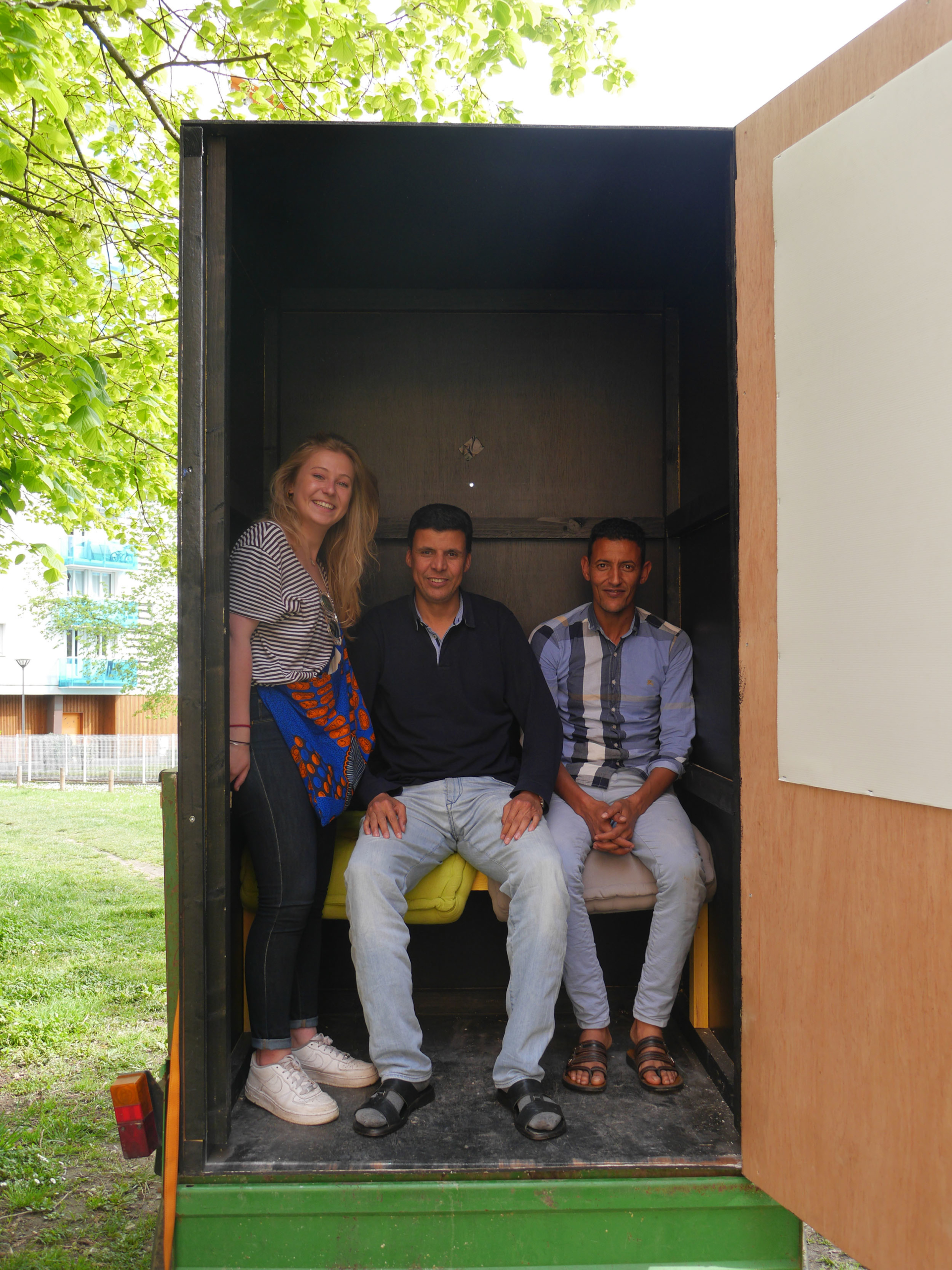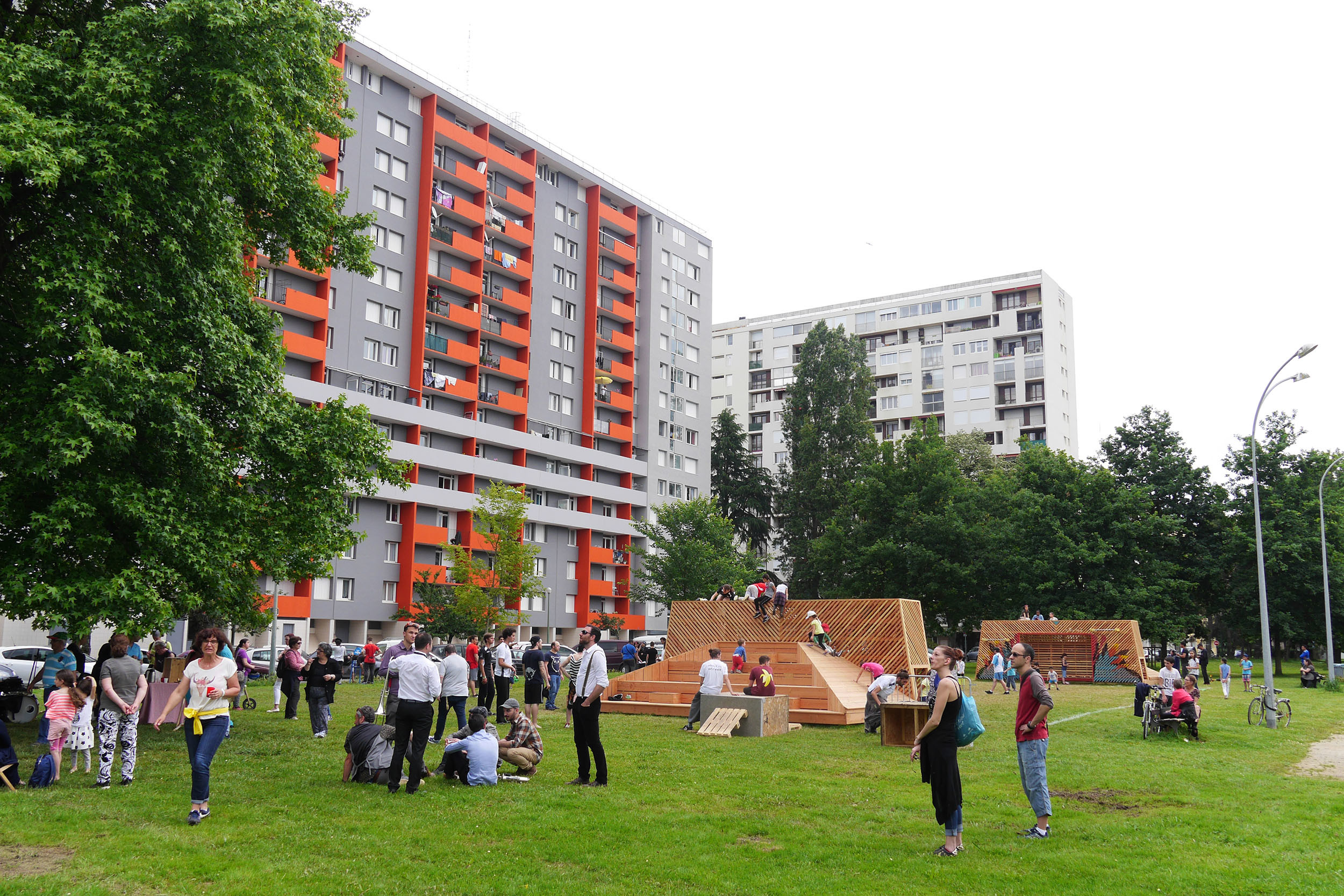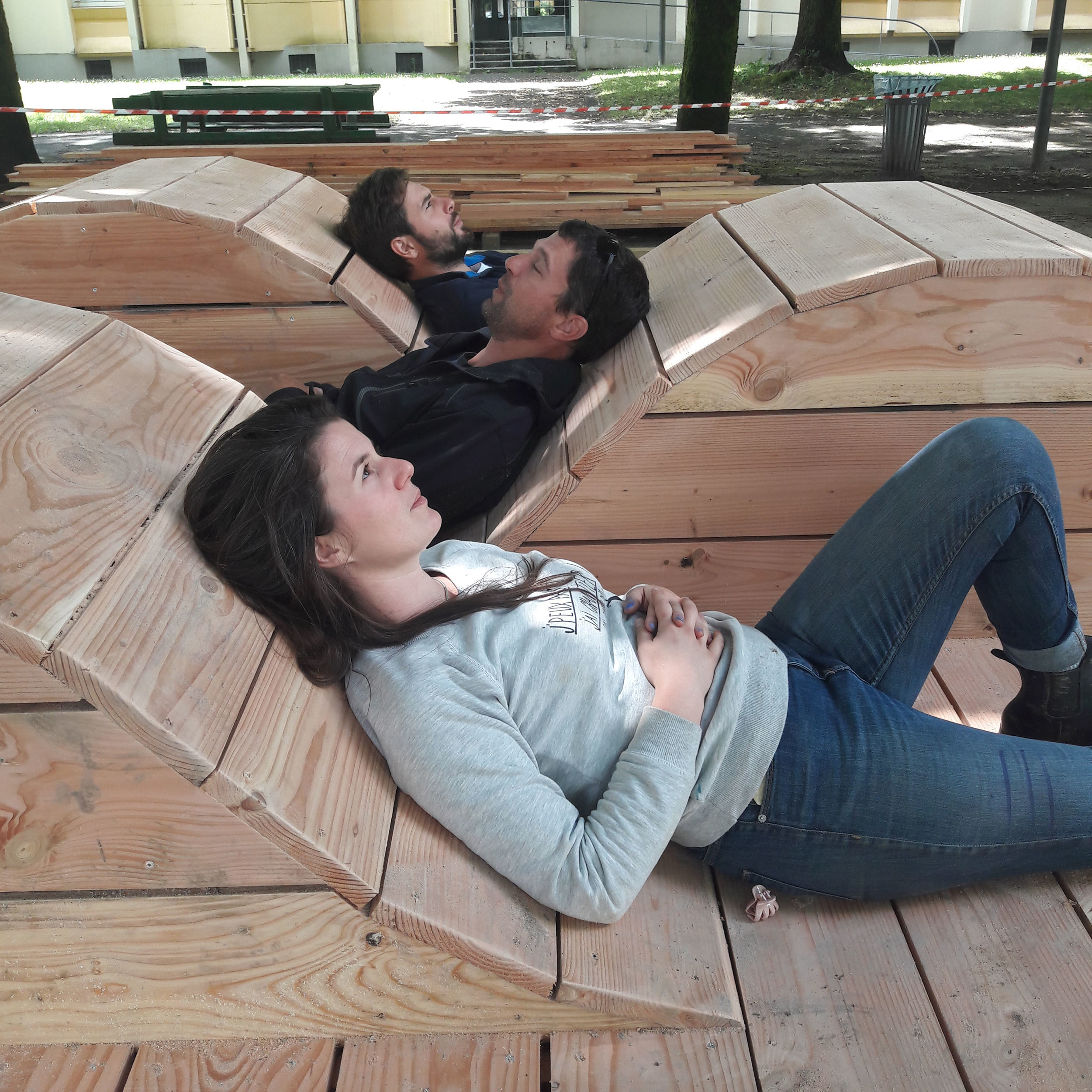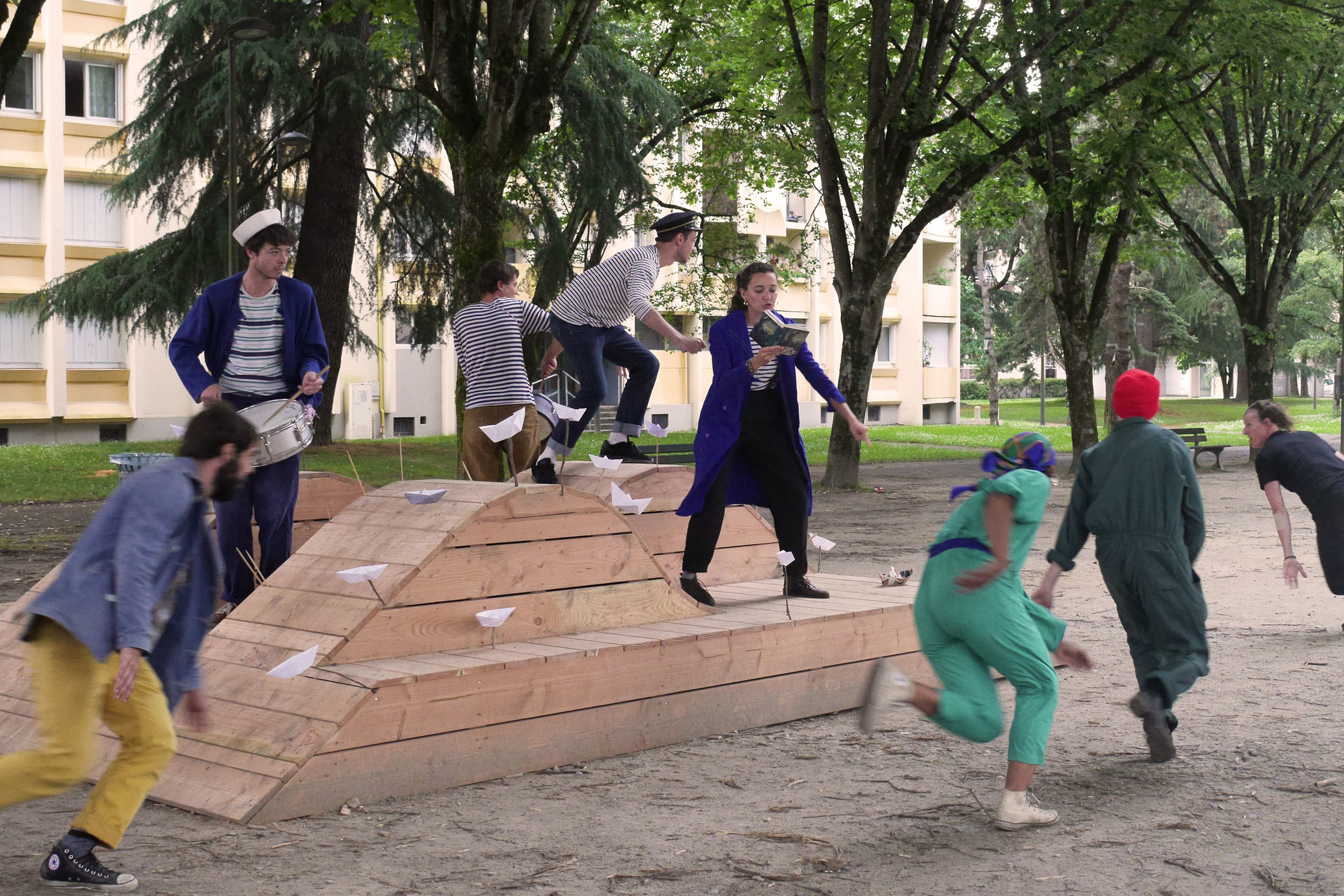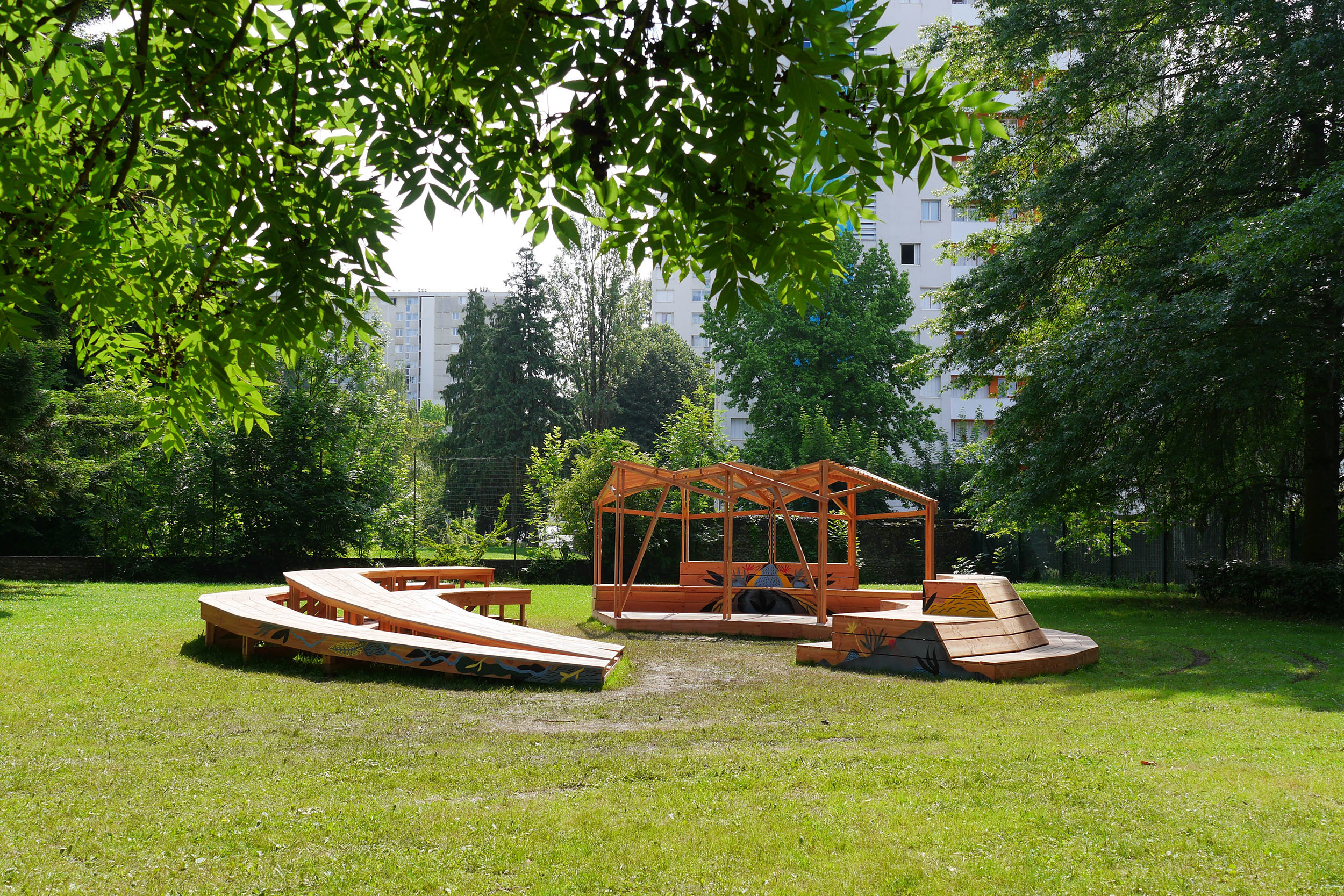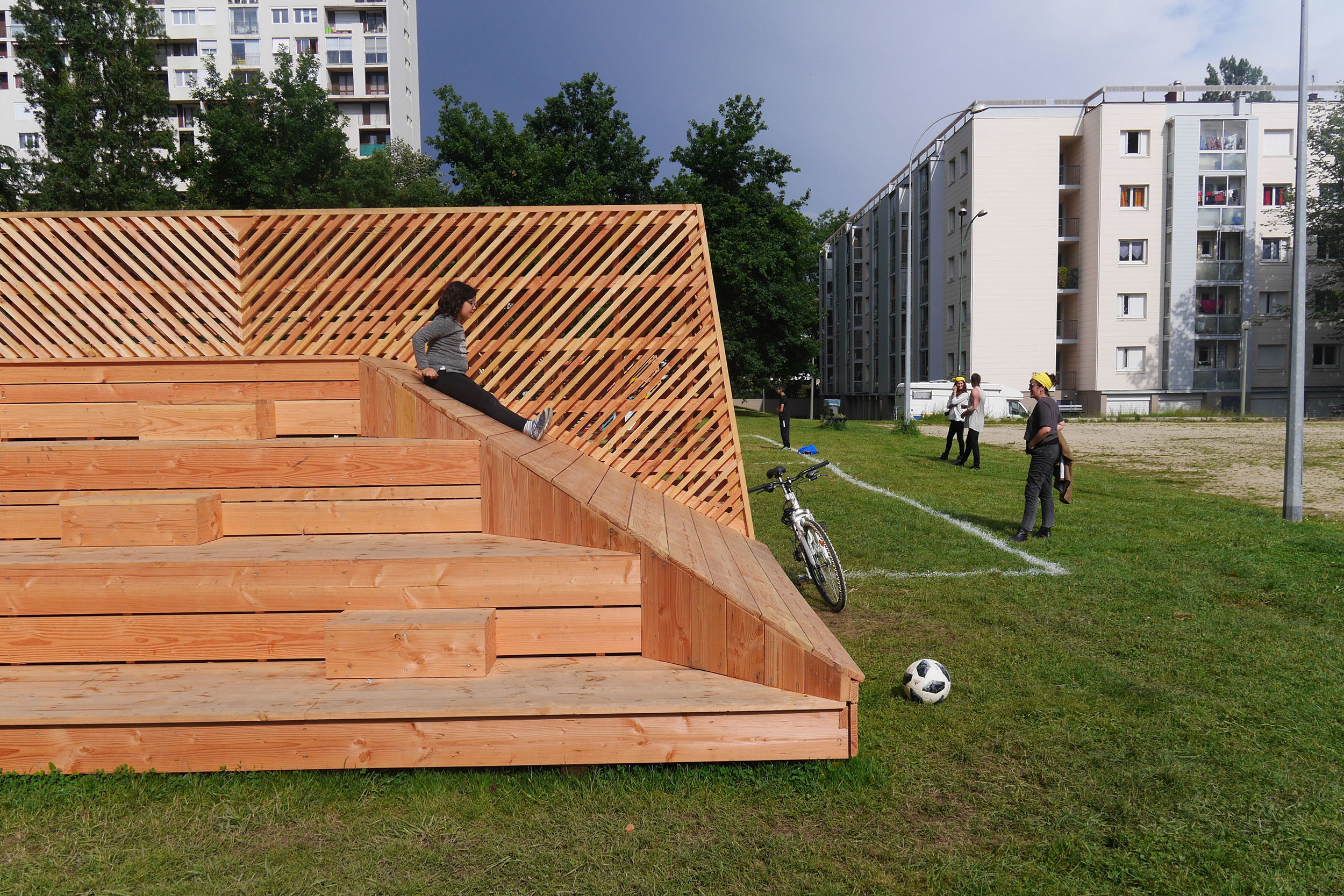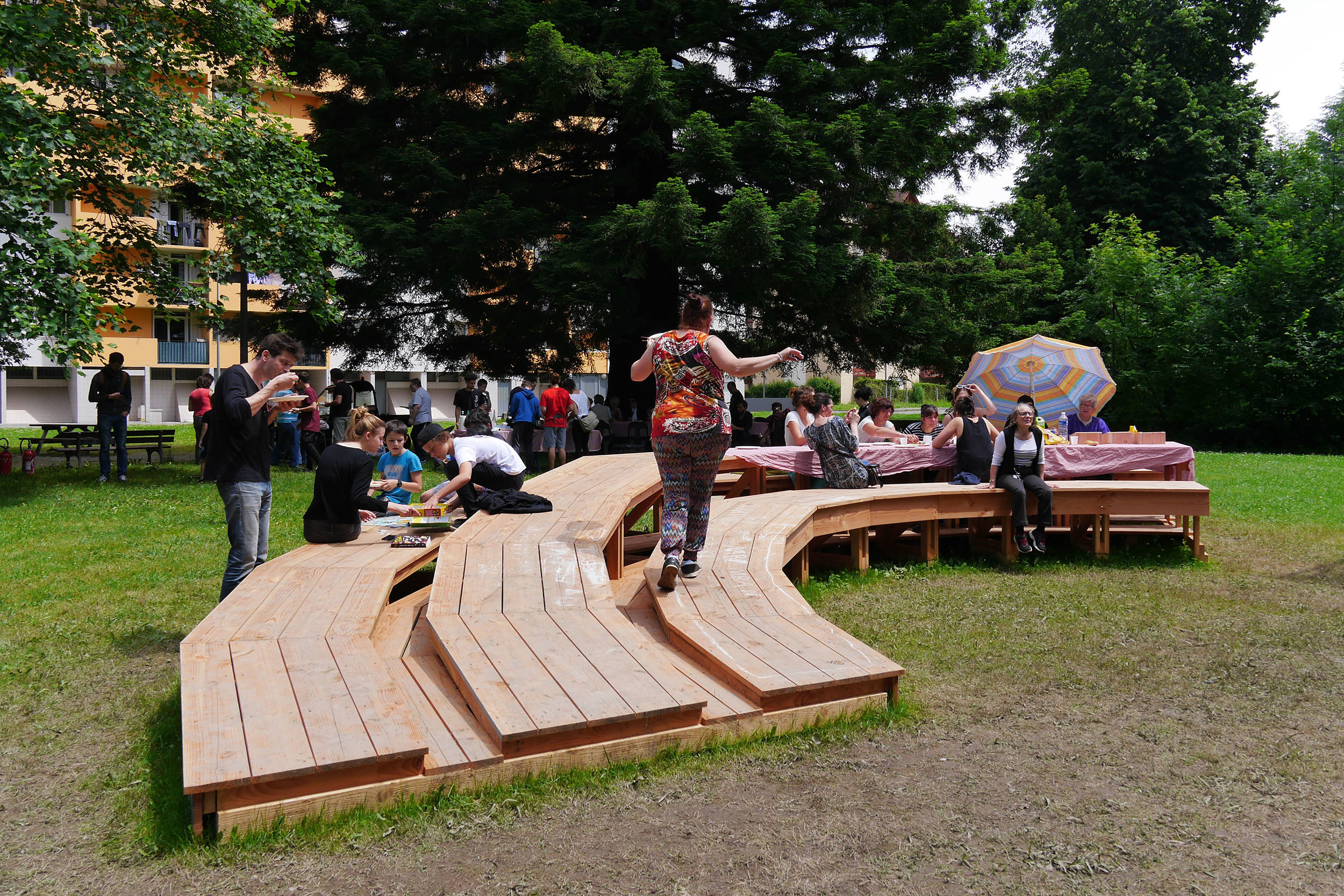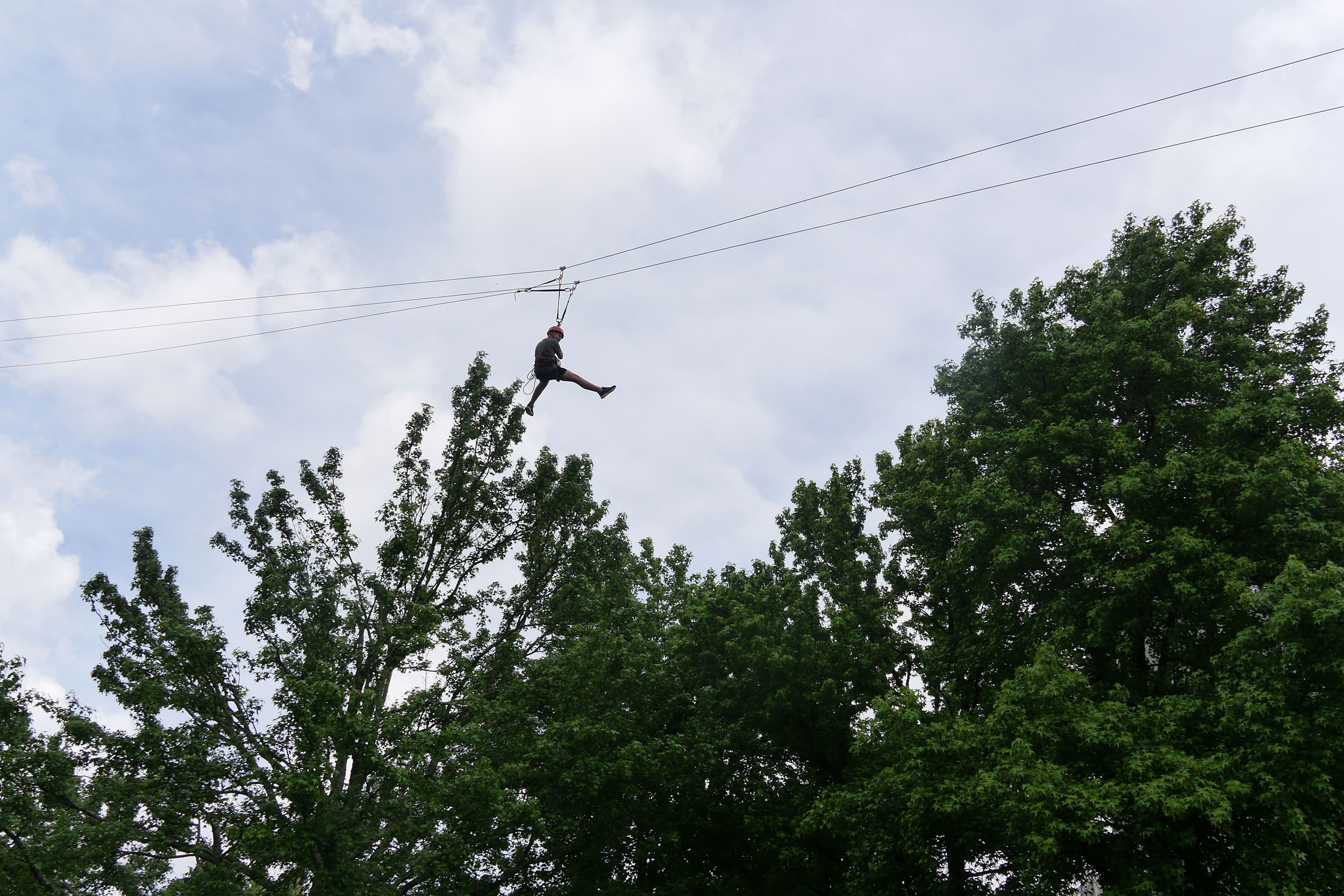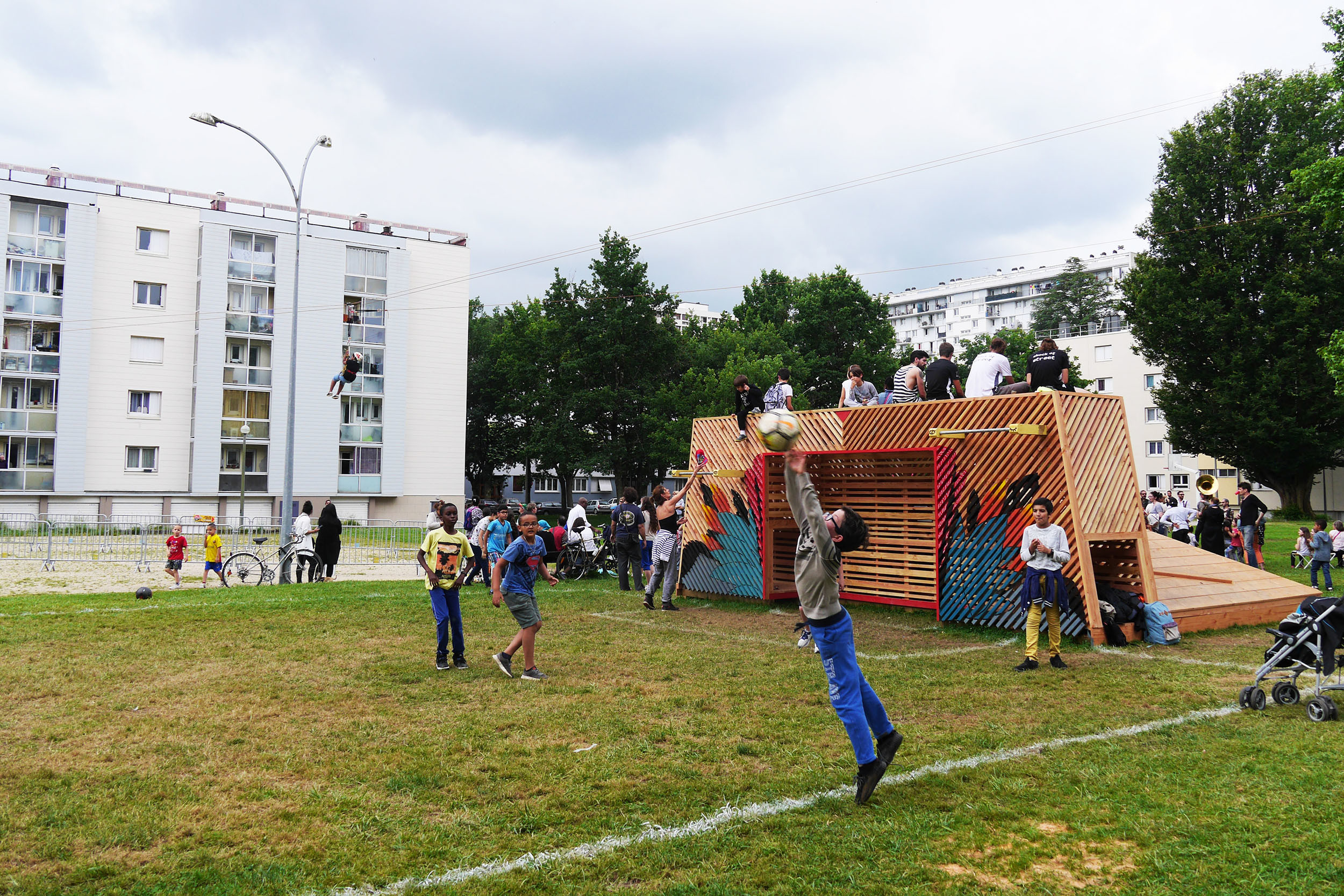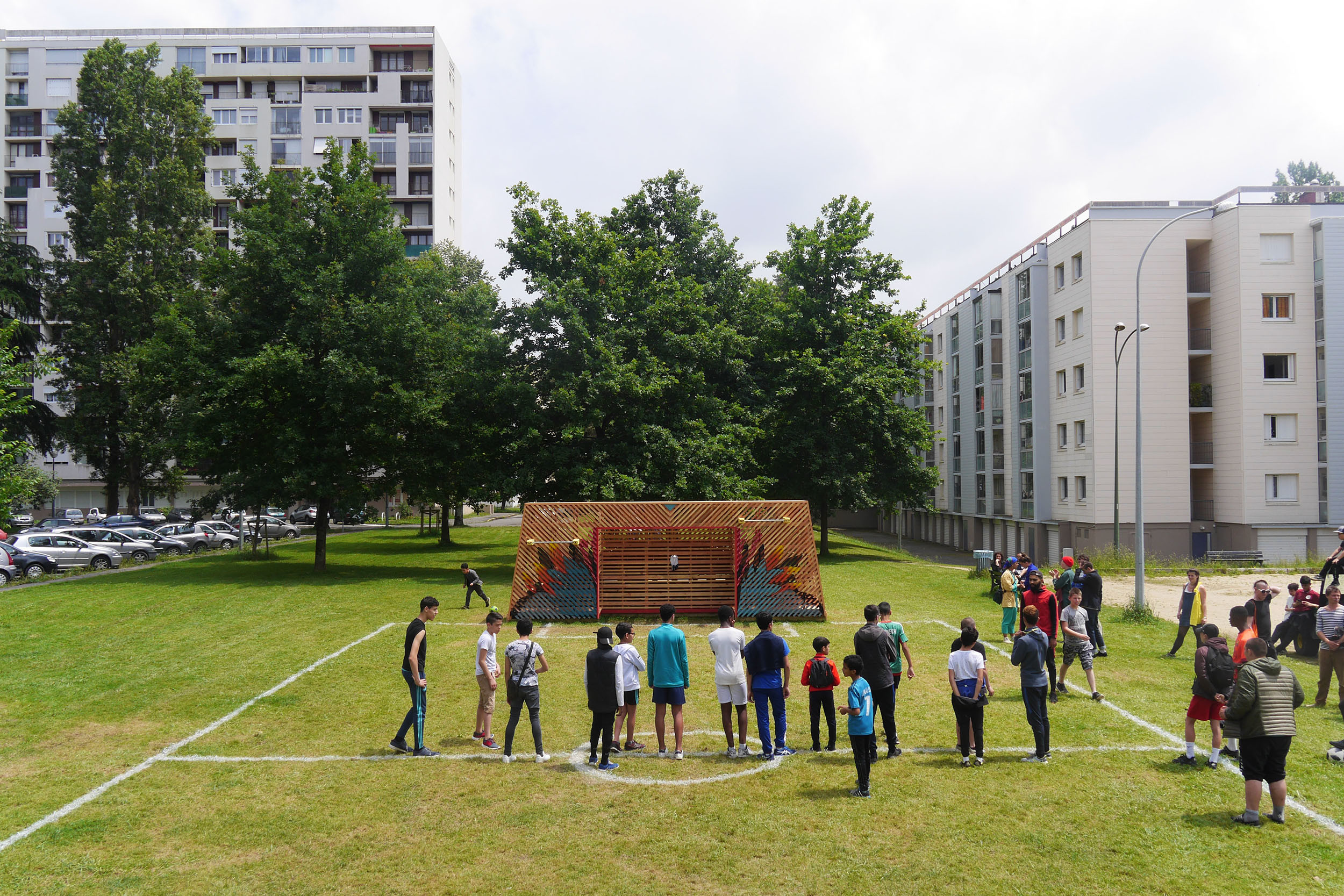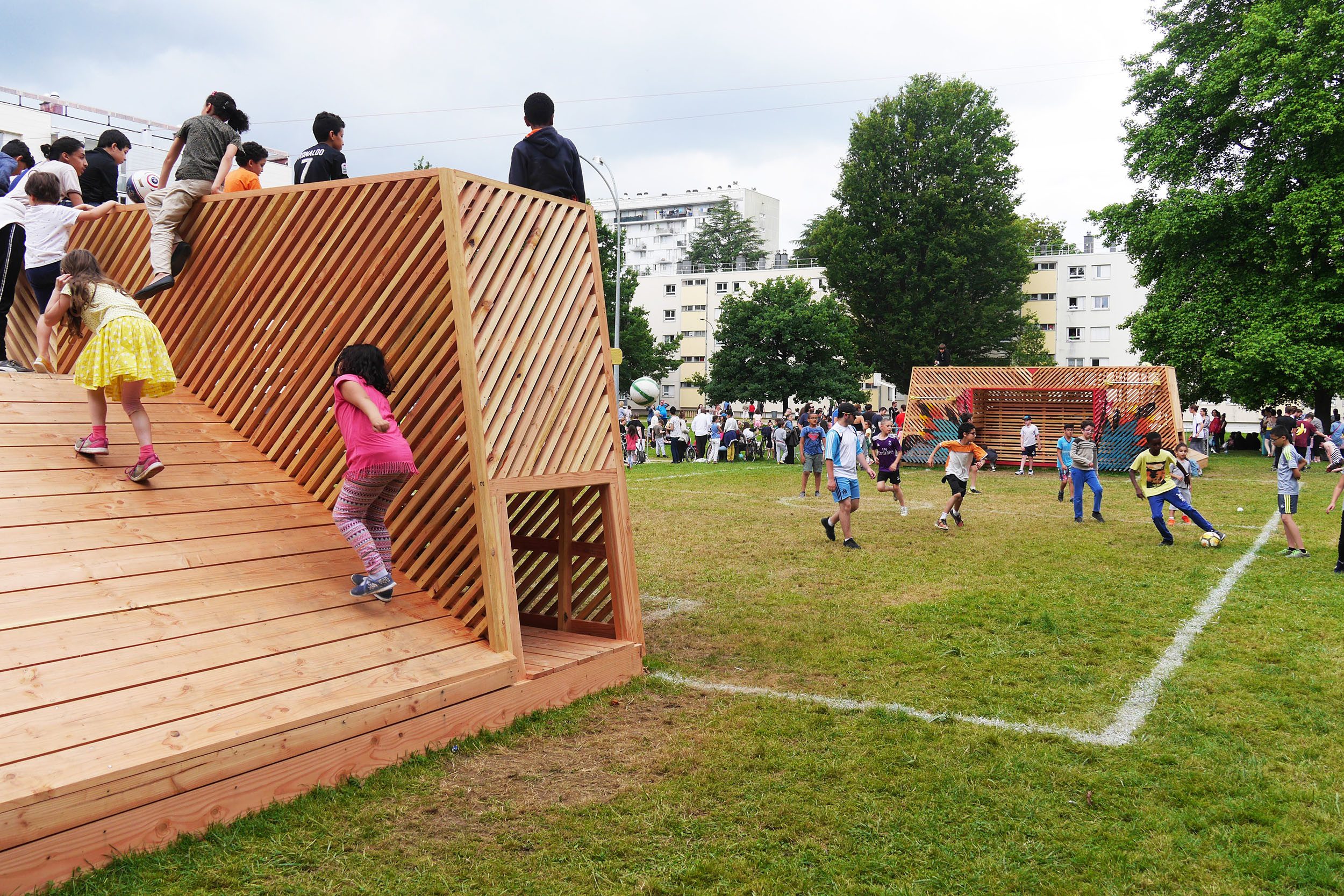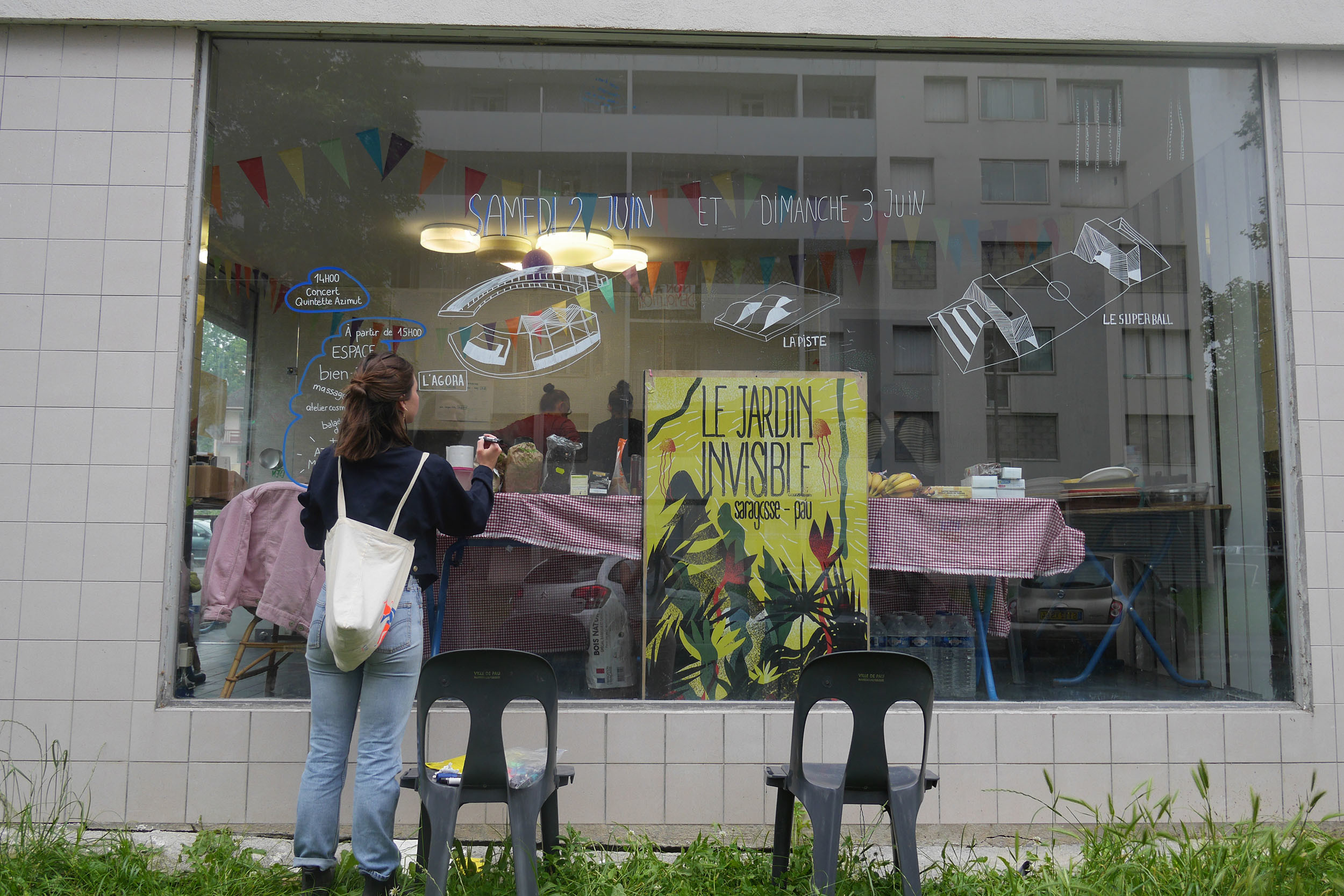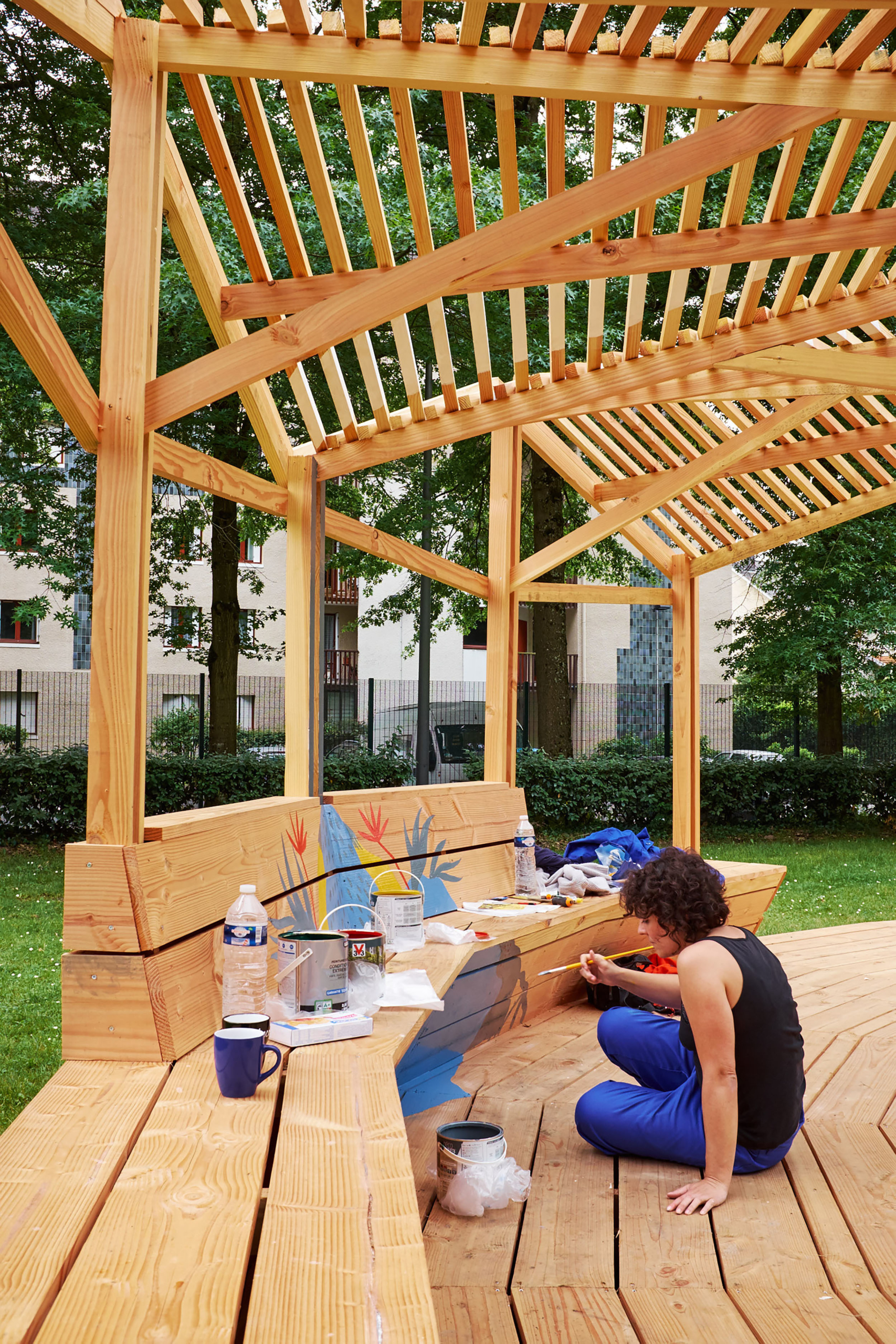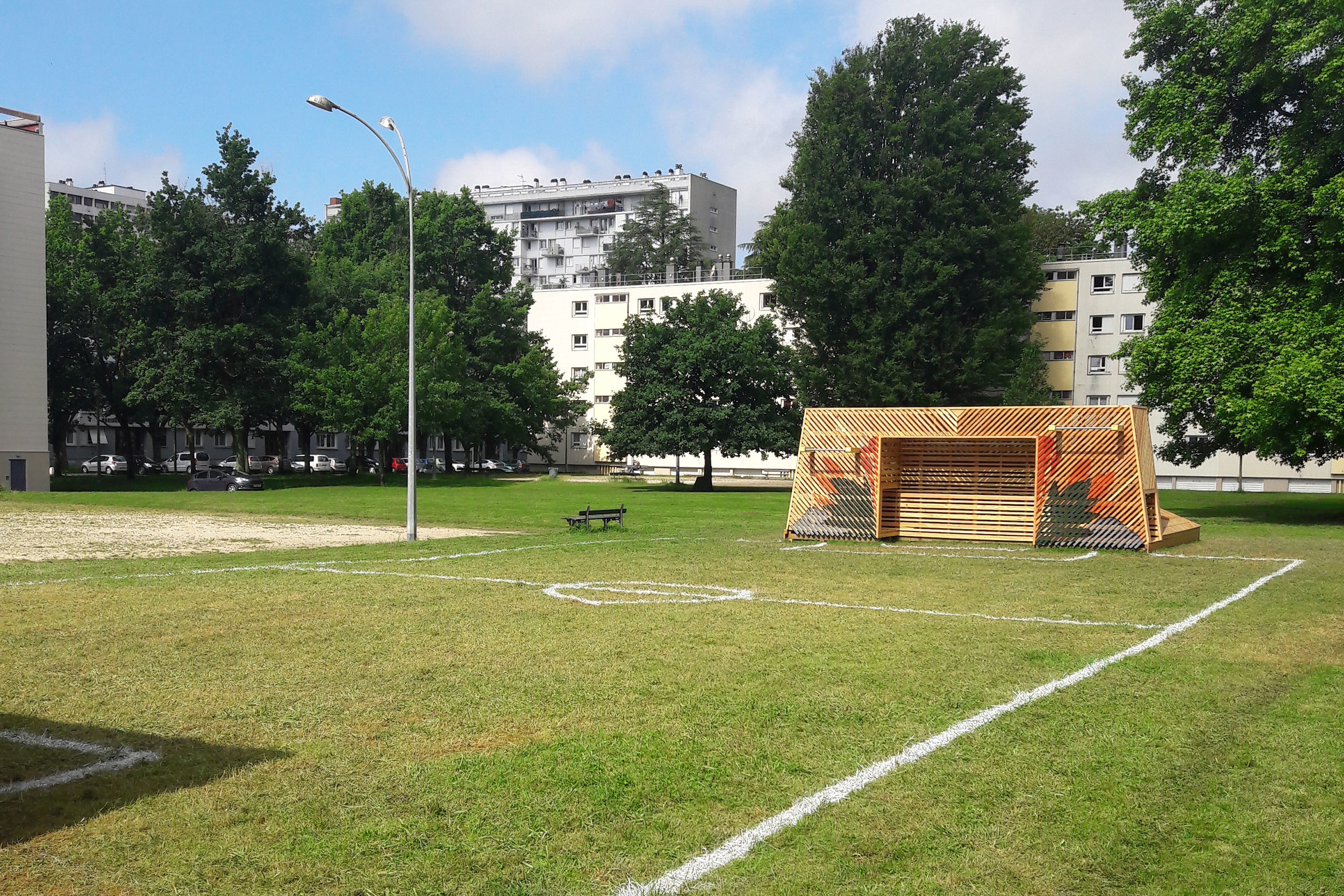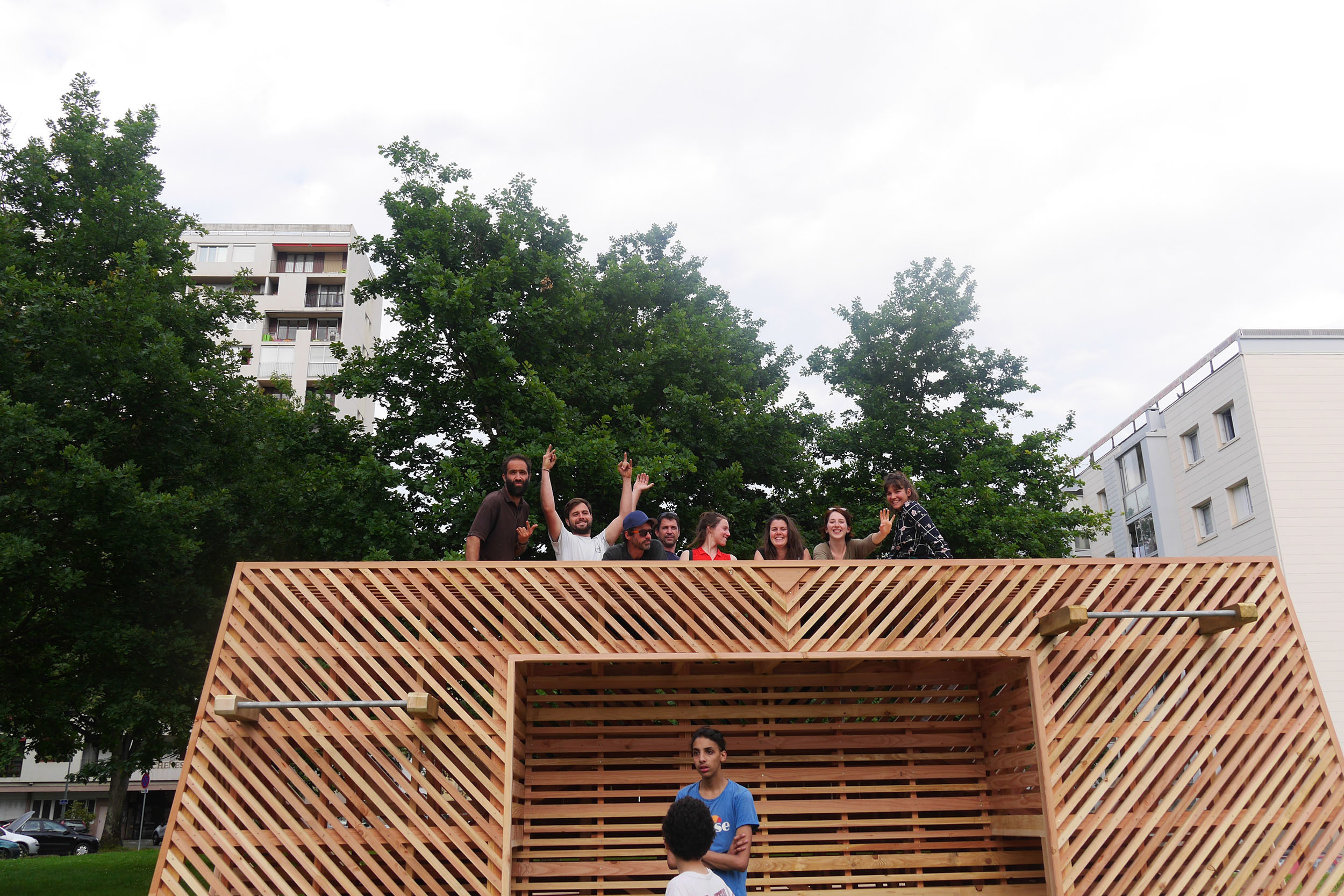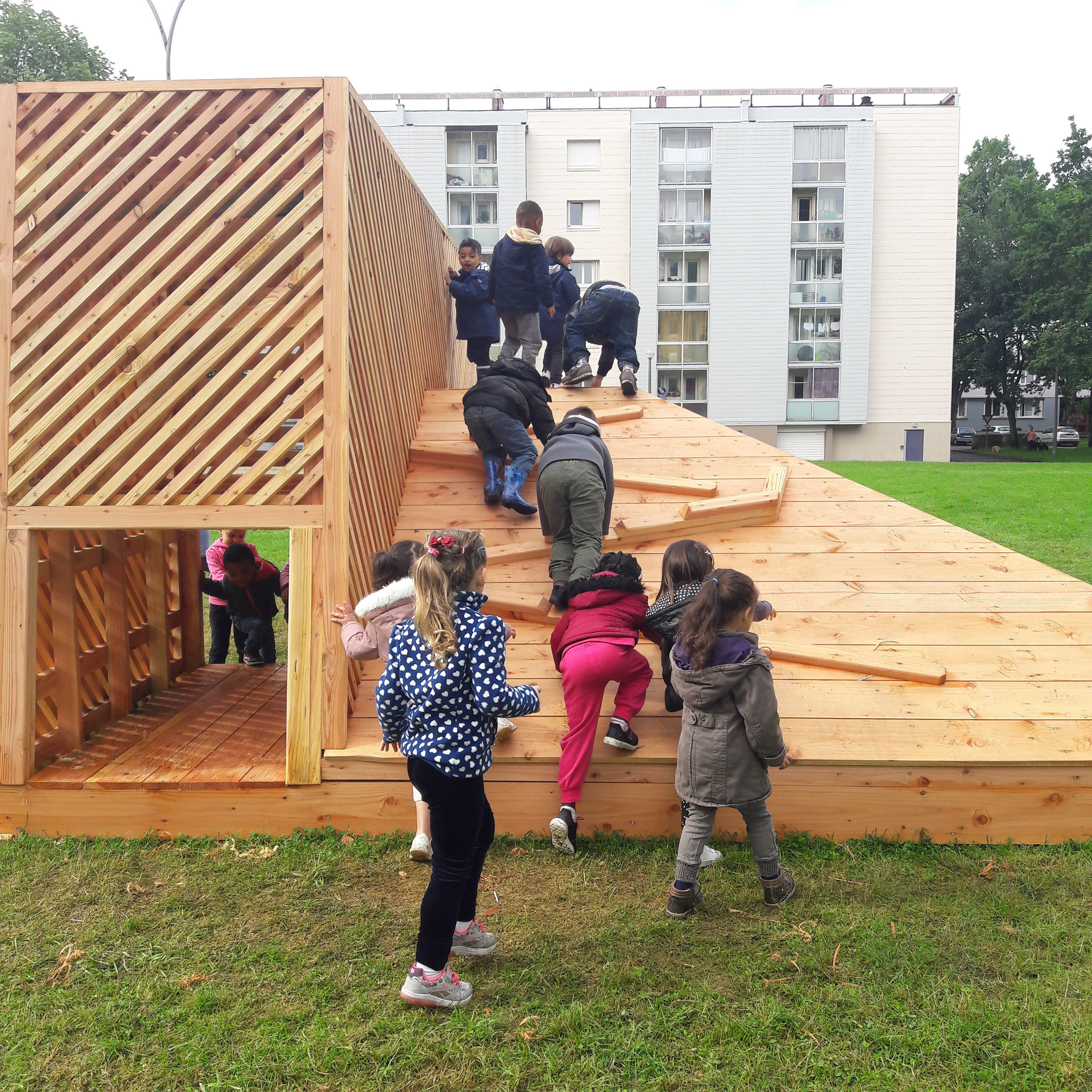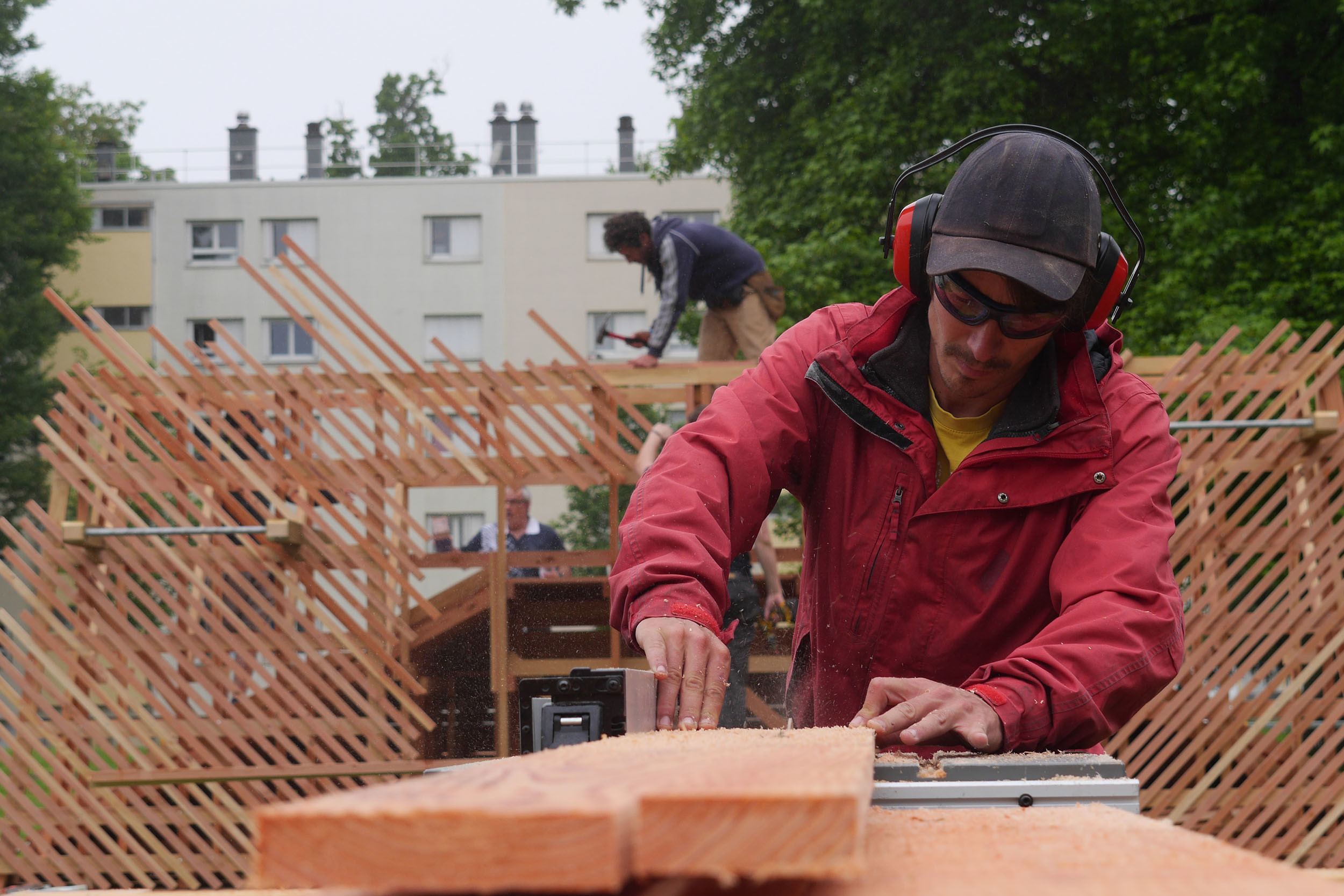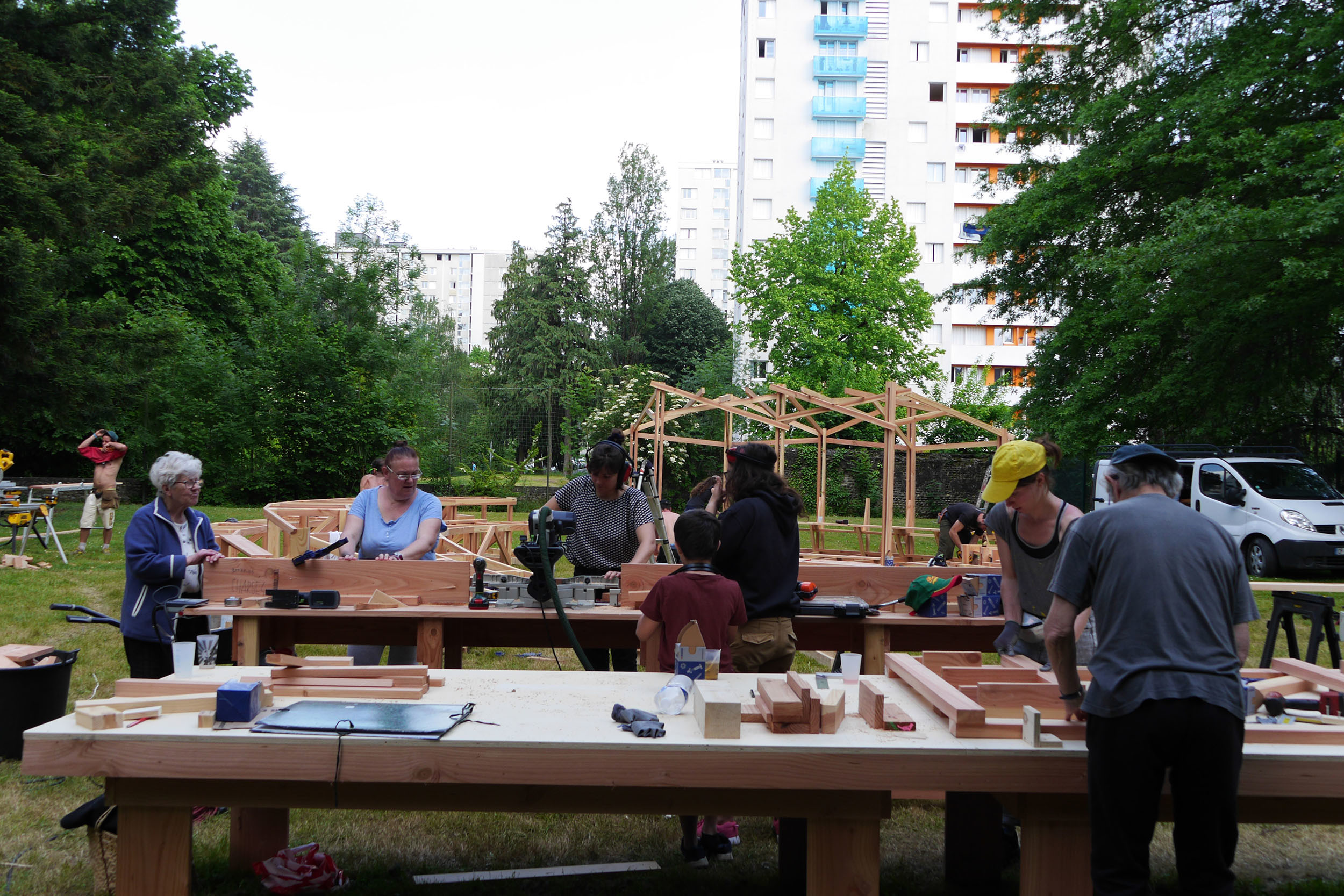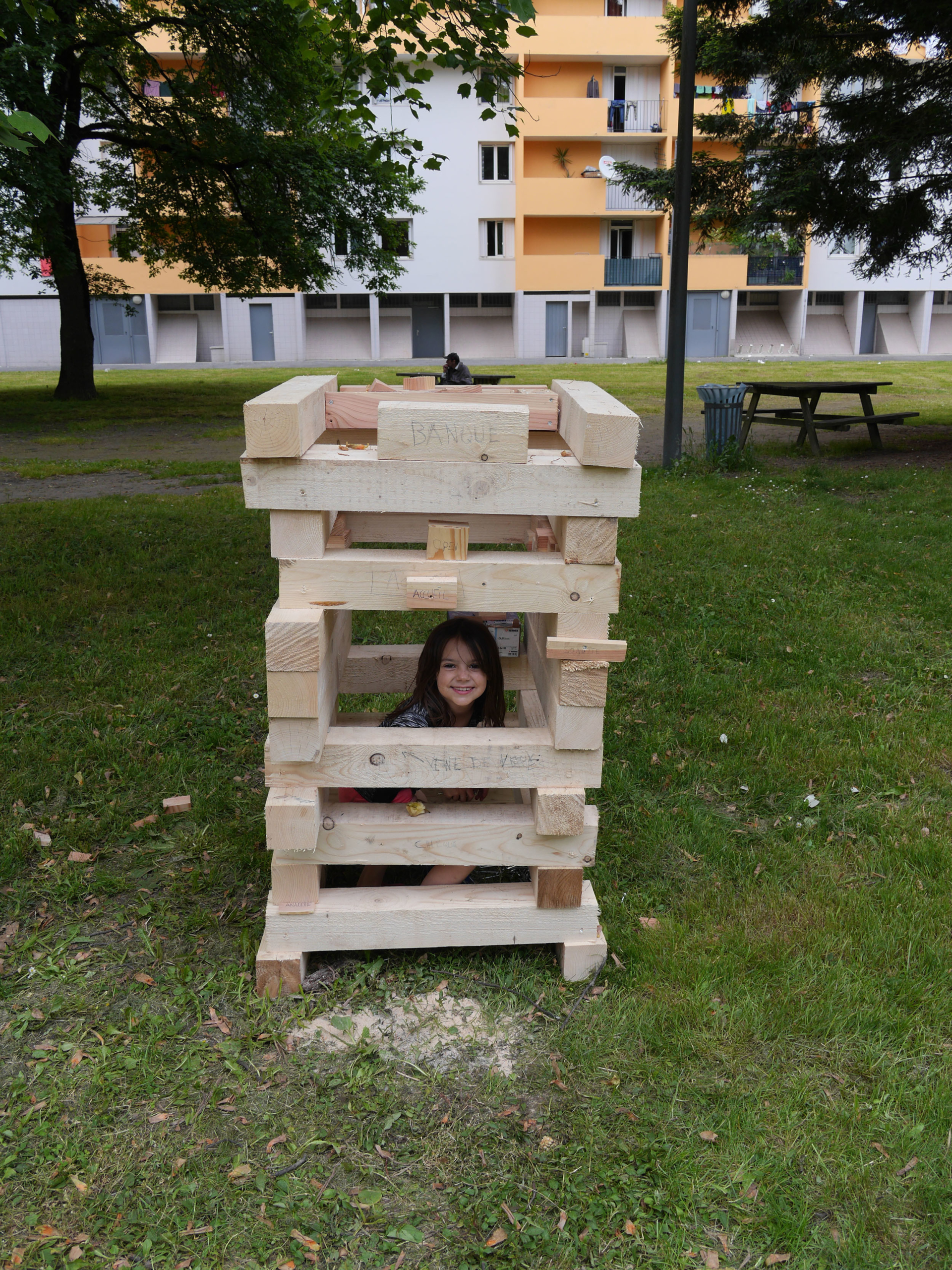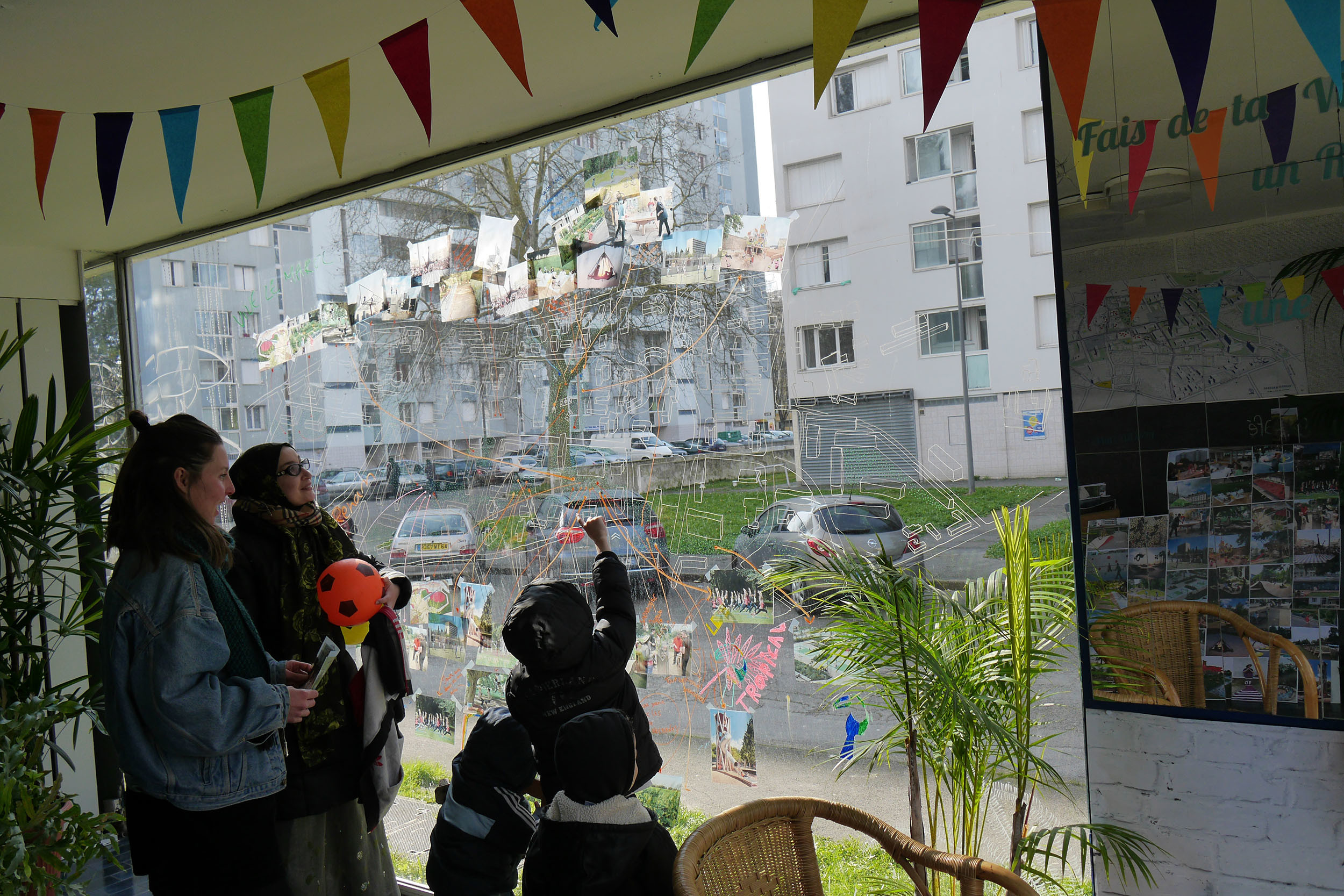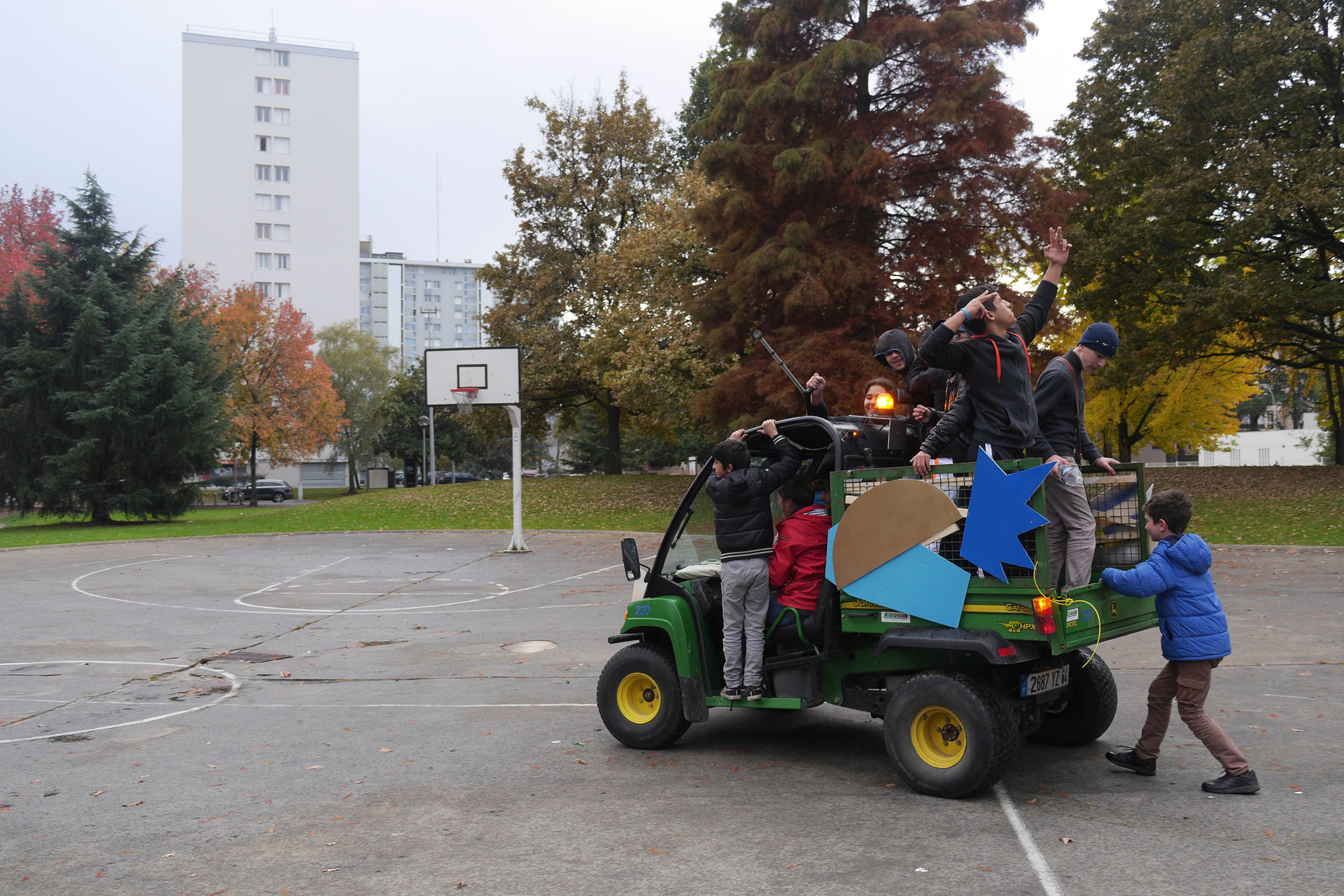
2017 - 2019
Invisible Garden
Saragosse neighbourhood
Pau
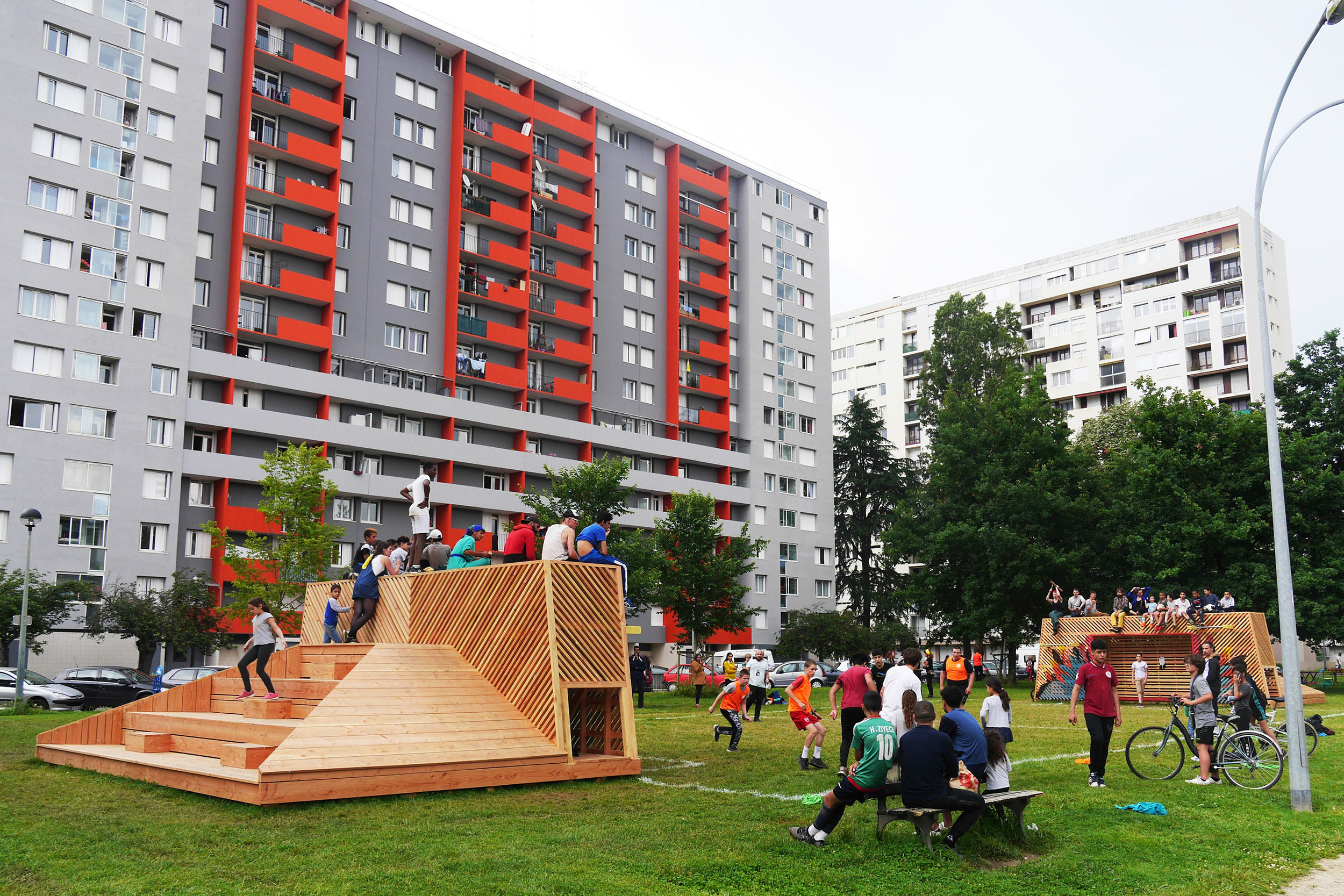
Reveal an invisible garden
In the framework of the redevelopment of public spaces in the Zaragoza neighbourhood, Bruit du frigo accompanies the landscape agency Base and the City of Pau in setting up a dynamic participatory process.
The Invisible Garden responds to the ambition to reconnect and revitalize the various parks located behind buildings in order to initiate a mobility phenomenon in the neighbourhood and to prefigure the future Linear Garden (future green corridor linking the green blocks of the neighbourhood from East to West).
Initiate the appropriation of the place
The Invisible Garden has taken shape through the creation of six temporary installations and a graphic path running from Cours Lyautey to Avenue de Buros. These Installations are the result of a series of walking workshops with local residents and actors.
Each structure is reversible and compiles a variety of uses in order to respond as closely as possible to the requests expressed while taking into account the landscape context in which it is installed. These installations generate a path punctuating the whole Invisible Garden and participate in the vitalisation of the sites through the uses they propose.
Realized within the framework of participative building sites, the ephemeral installations were born from a collective work thus participating in the appropriation of the green spaces of the neighbourhood. In addition to the participatory process, two high moments were organised to celebrate the end of the project, to invite the inhabitants to rediscover their neighbourhood, to dream and to touch the possibilities through a rich and varied artistic and festive programme. A programme that invites the visitor to walk through and cross the streets, the park and the gardens ; a programme built on the desires, dreams and specificities of each person encountered.
Last
projects
> all projectsAt the crossroads of art, territories and populations, our approach aims to promote the transition to sustainable, shared and welcoming cities, by proposing alternative ways of imagining and building our living environment and by exploring new forms of public space.

La Nuit Verte, biennale de panoramas
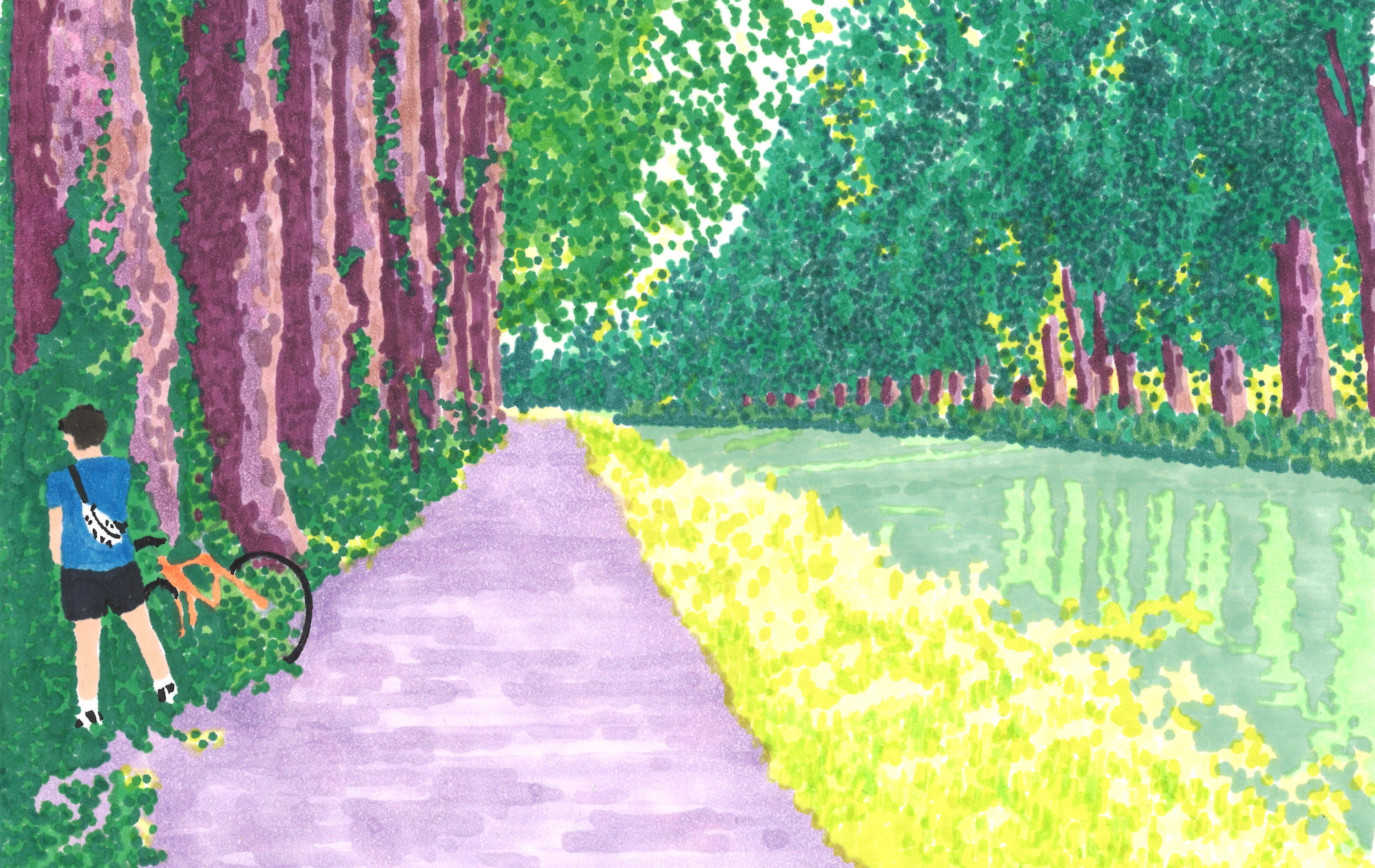
On vacation with Jeannie L #3
An artistic epic on bicycle Bordeaux - piste du canal latéral de la Garonne

The Bancales
Zenith Toulouse Metropolis
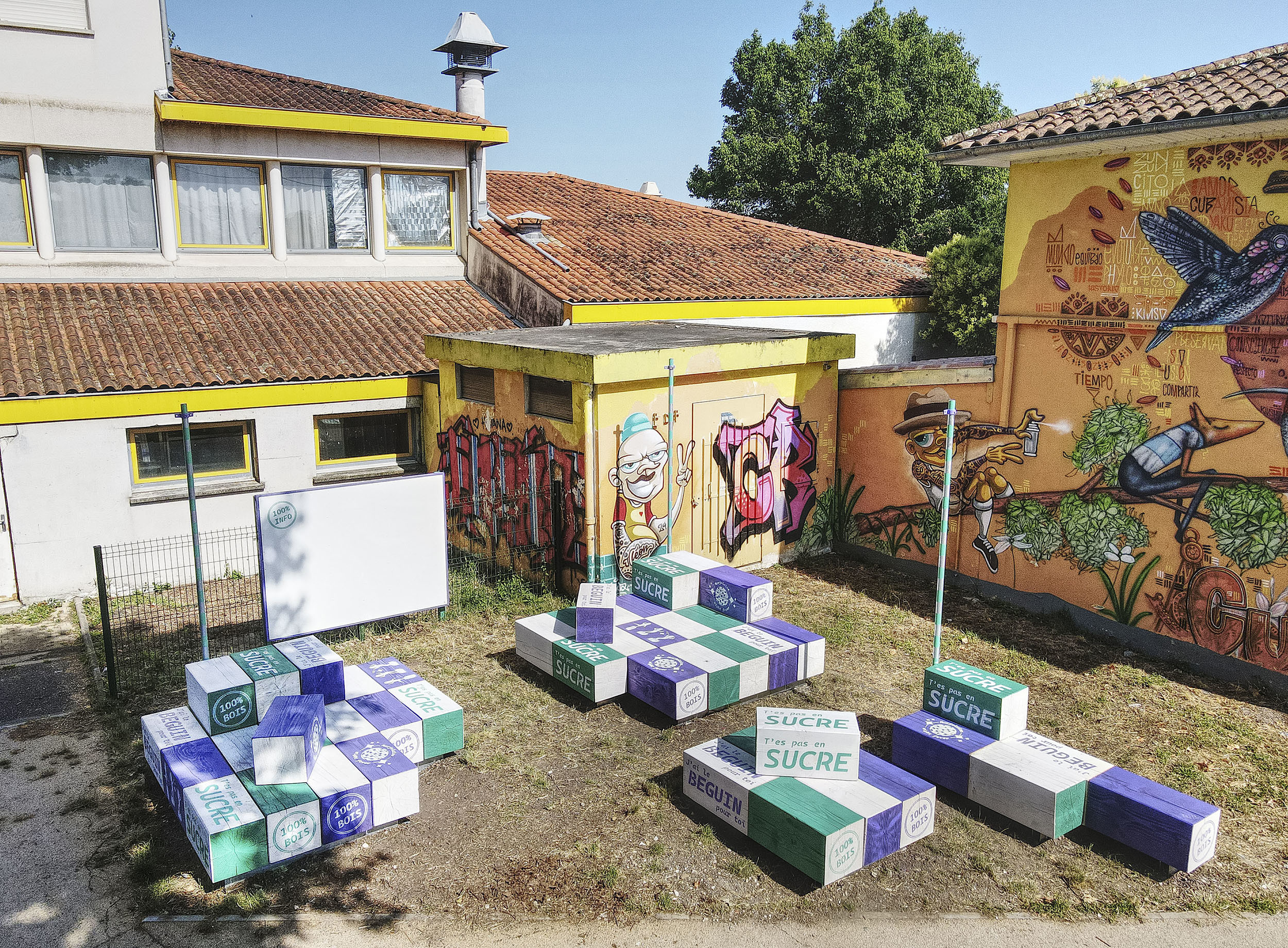
A crush on Marjolaine
Freedom pavilion "Bacalanhood" - Bordeaux

The Champicnic table
Pessac

The Secret Balconies # 3 – The Pinède balcony
Montpellier

Common lands trail
Exhibition Nouvelles Saisons, arc en rêve centre d'architecture Bordeaux
